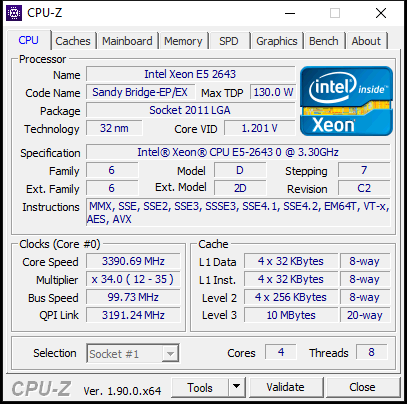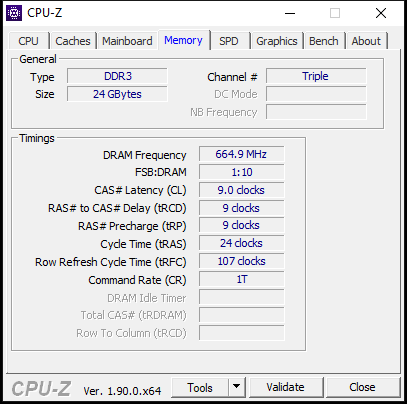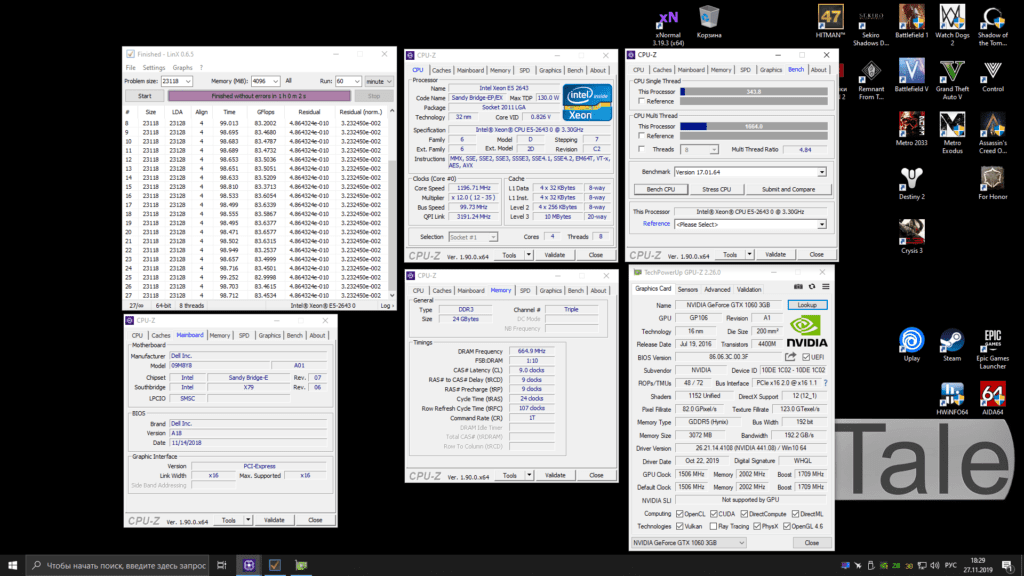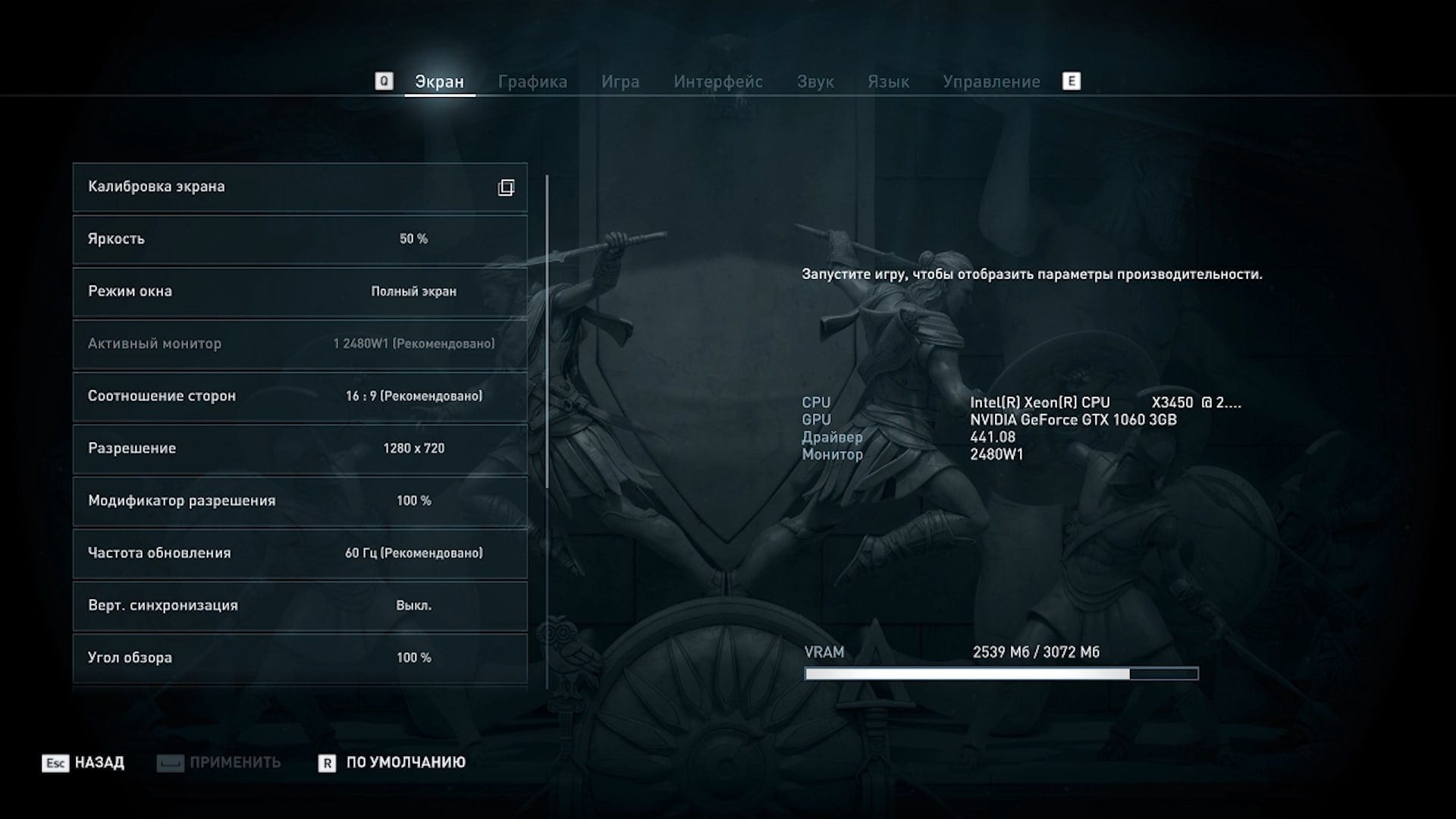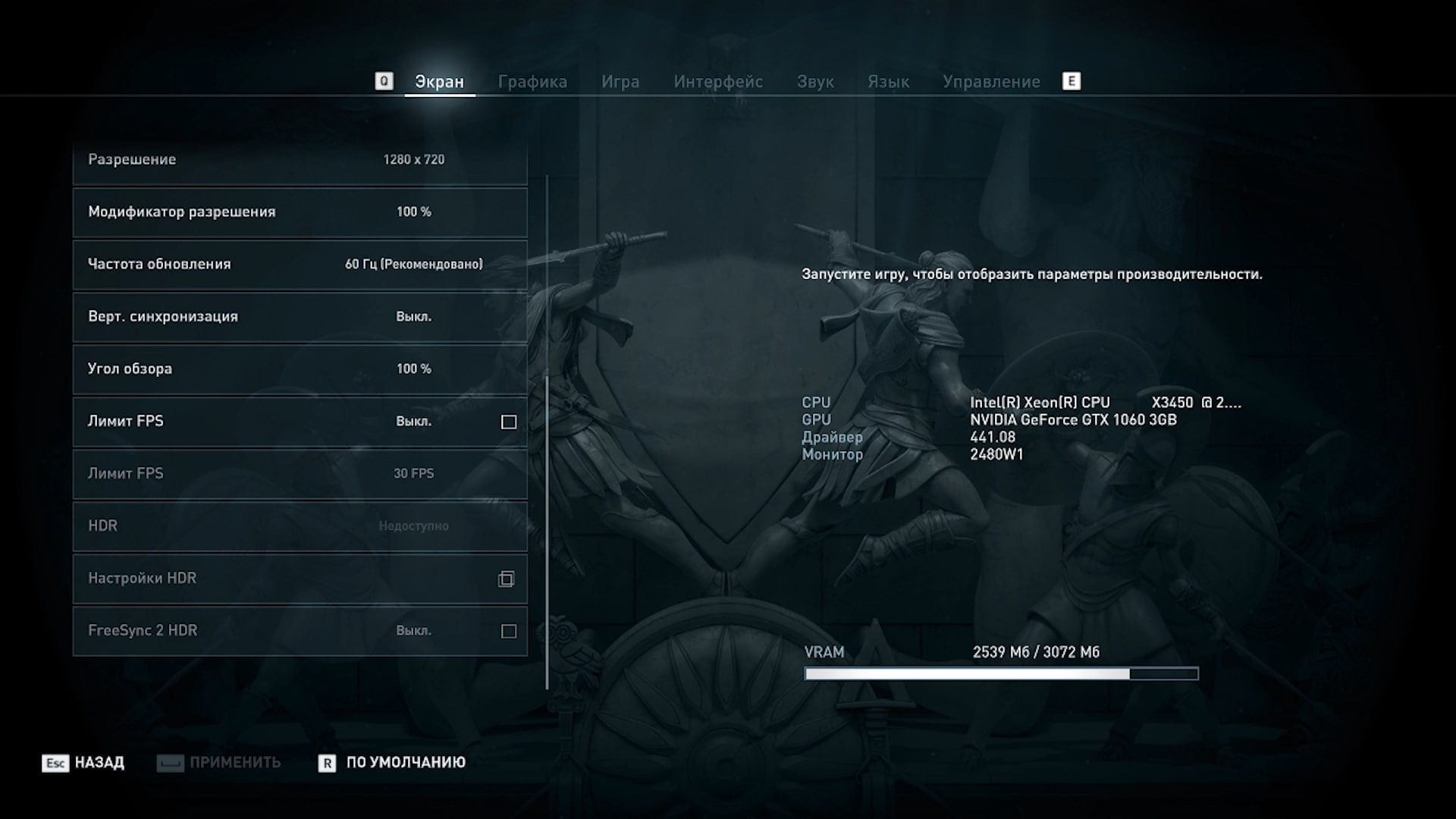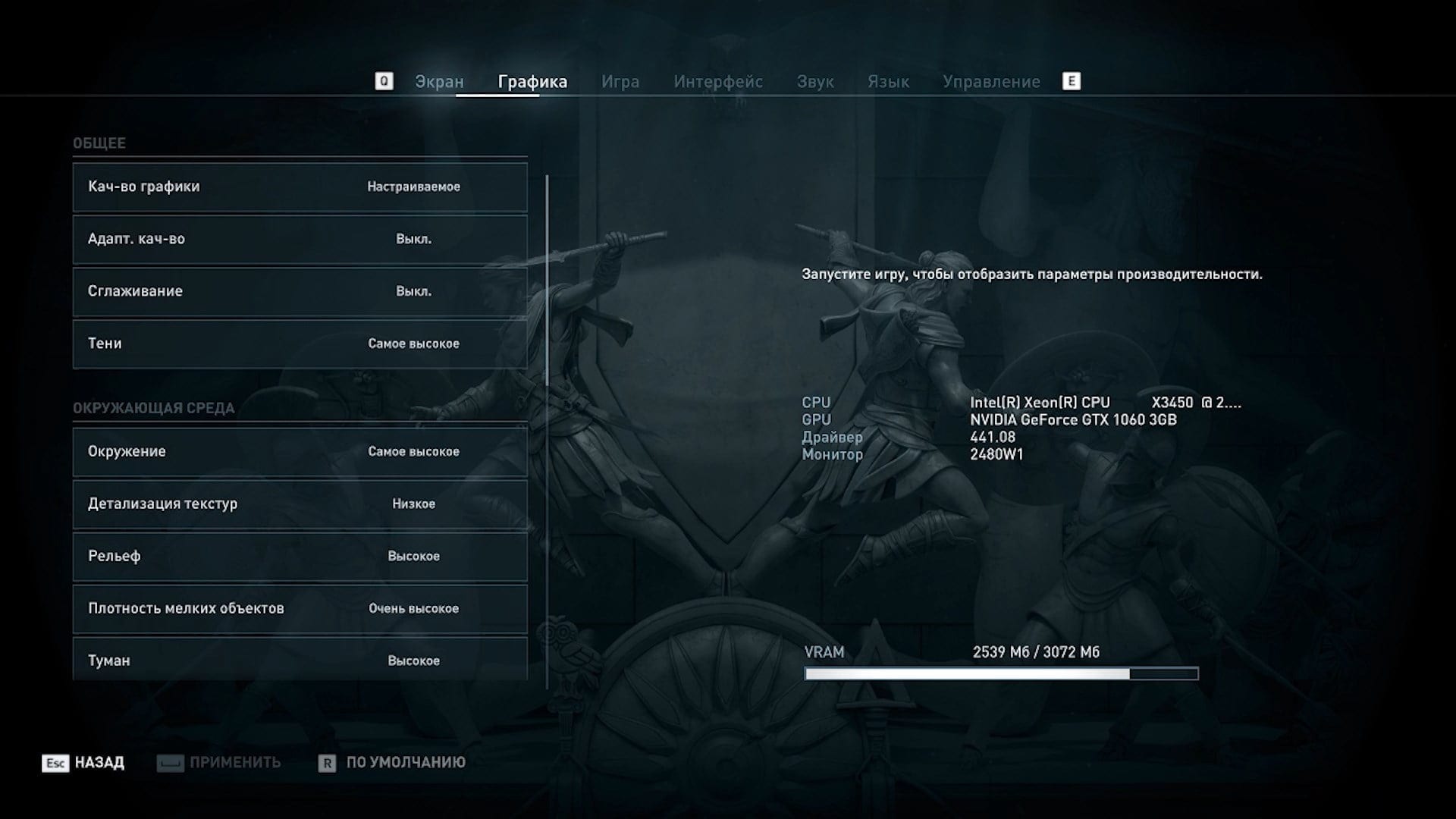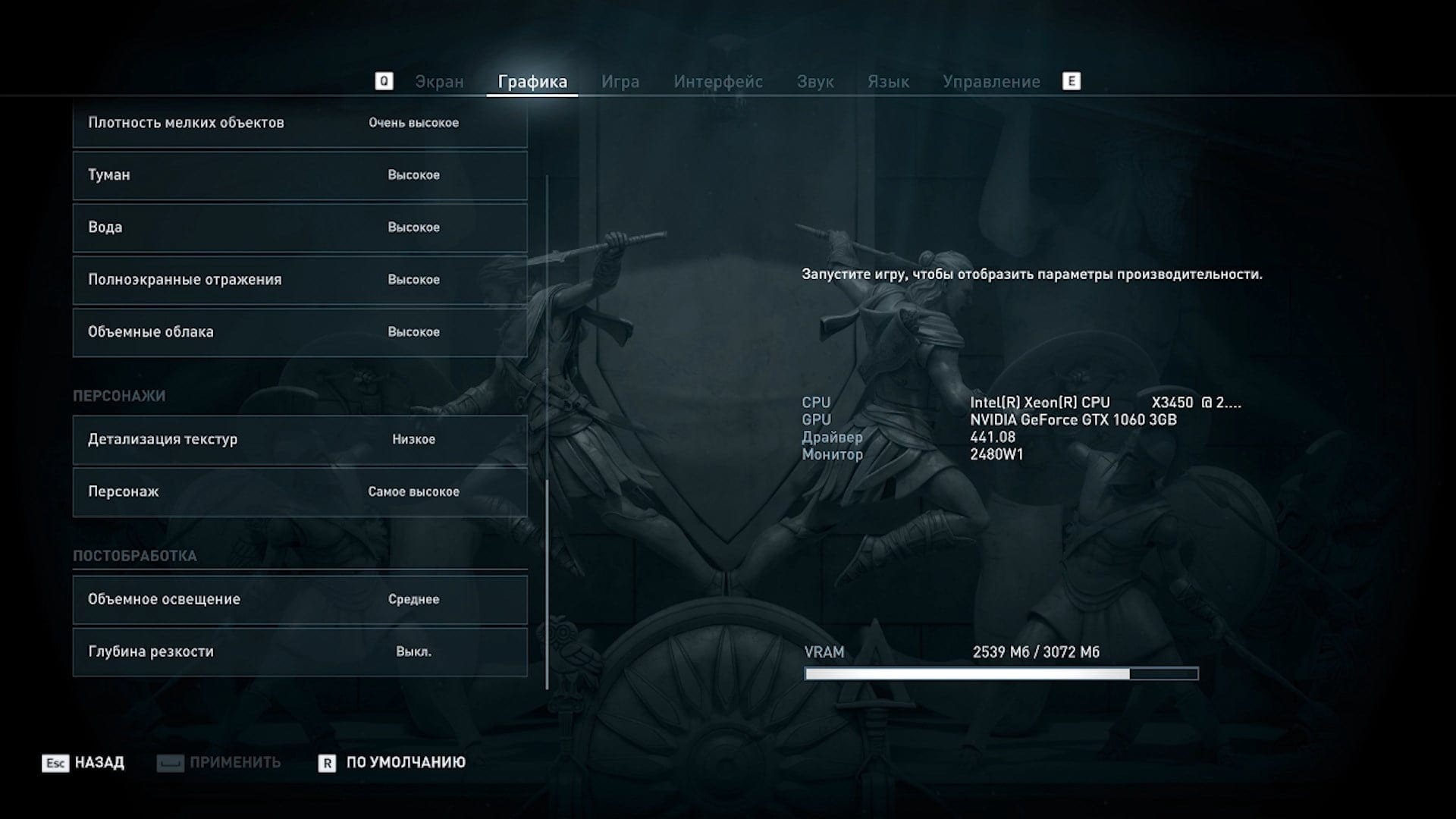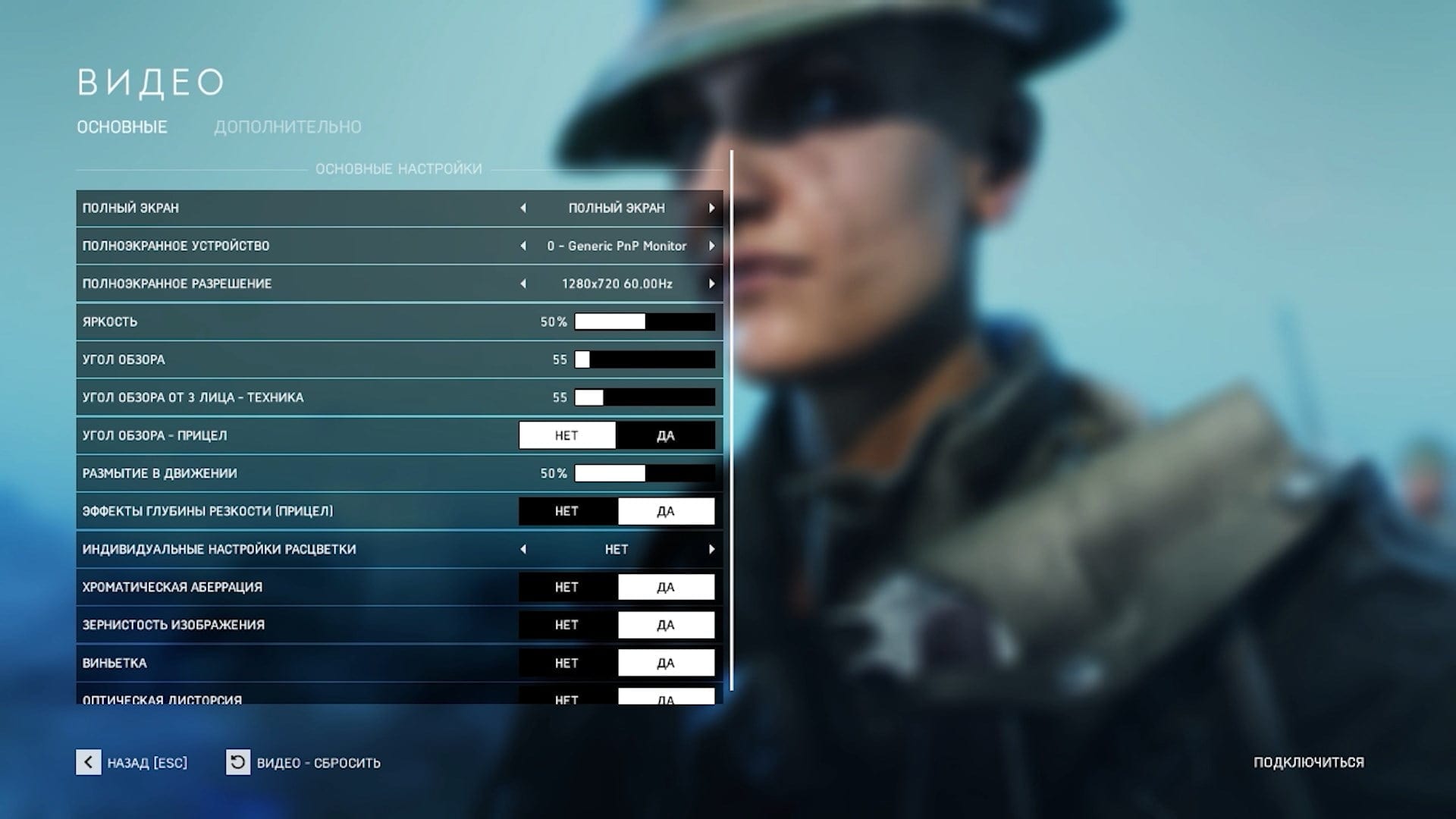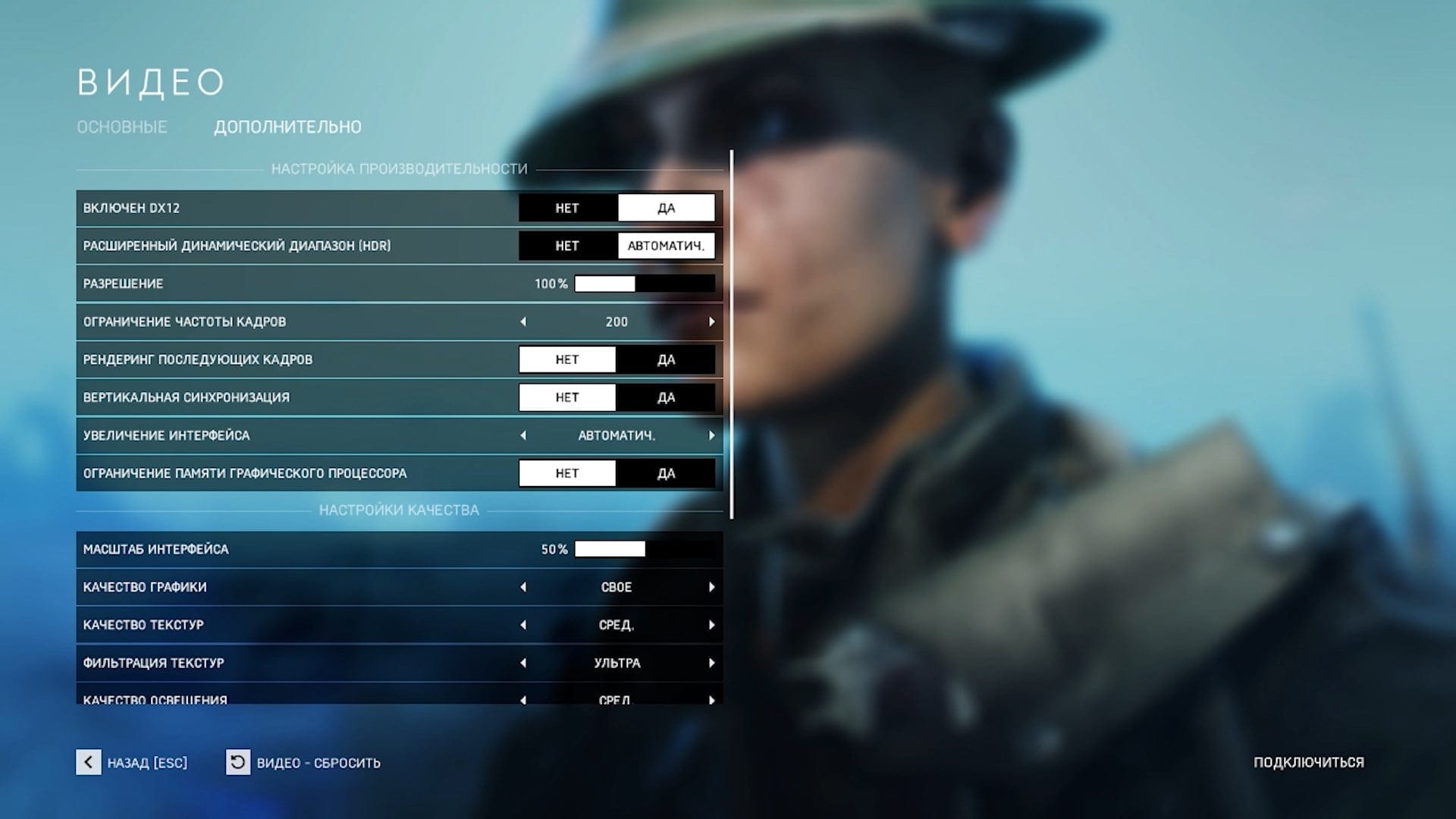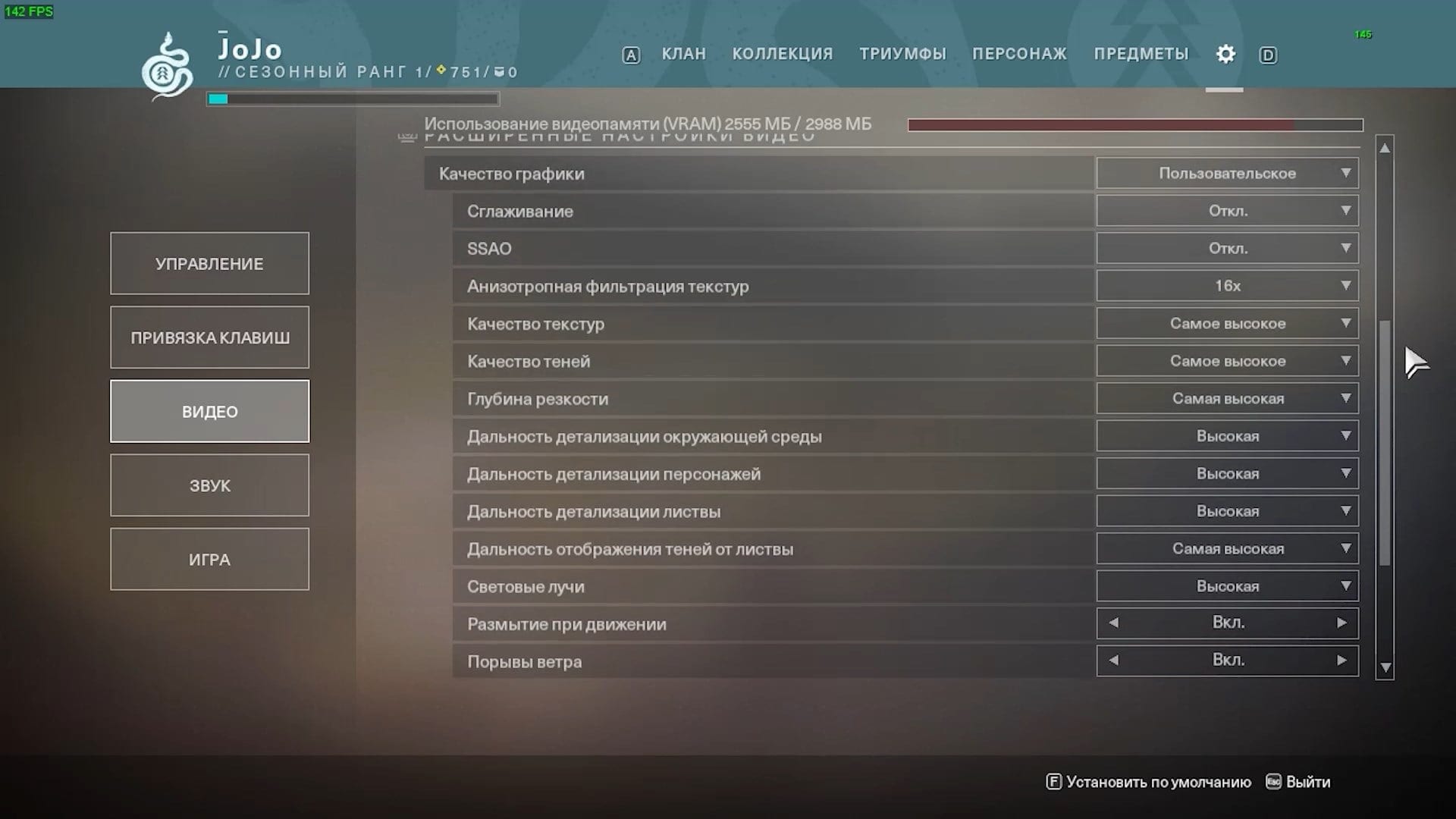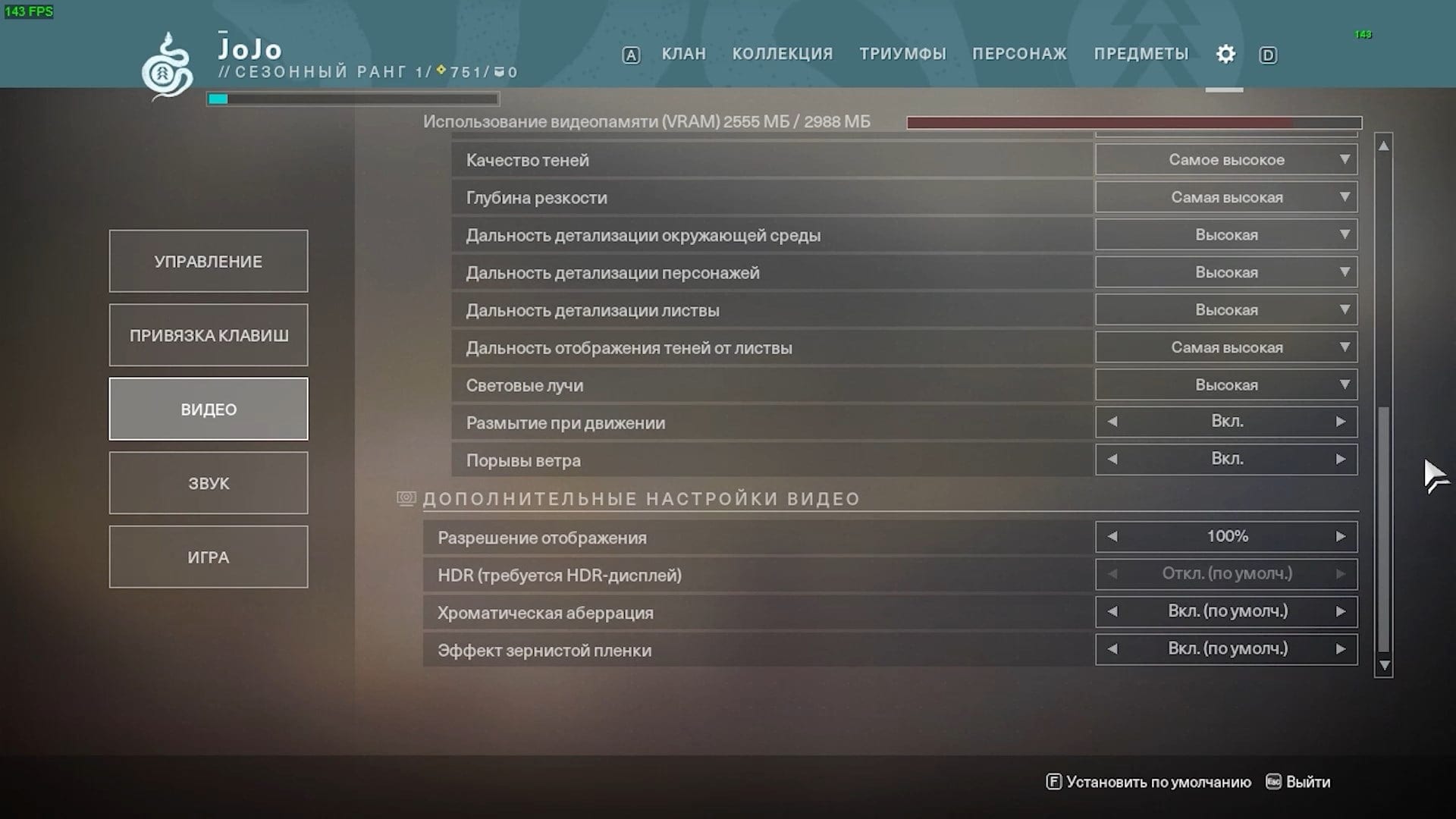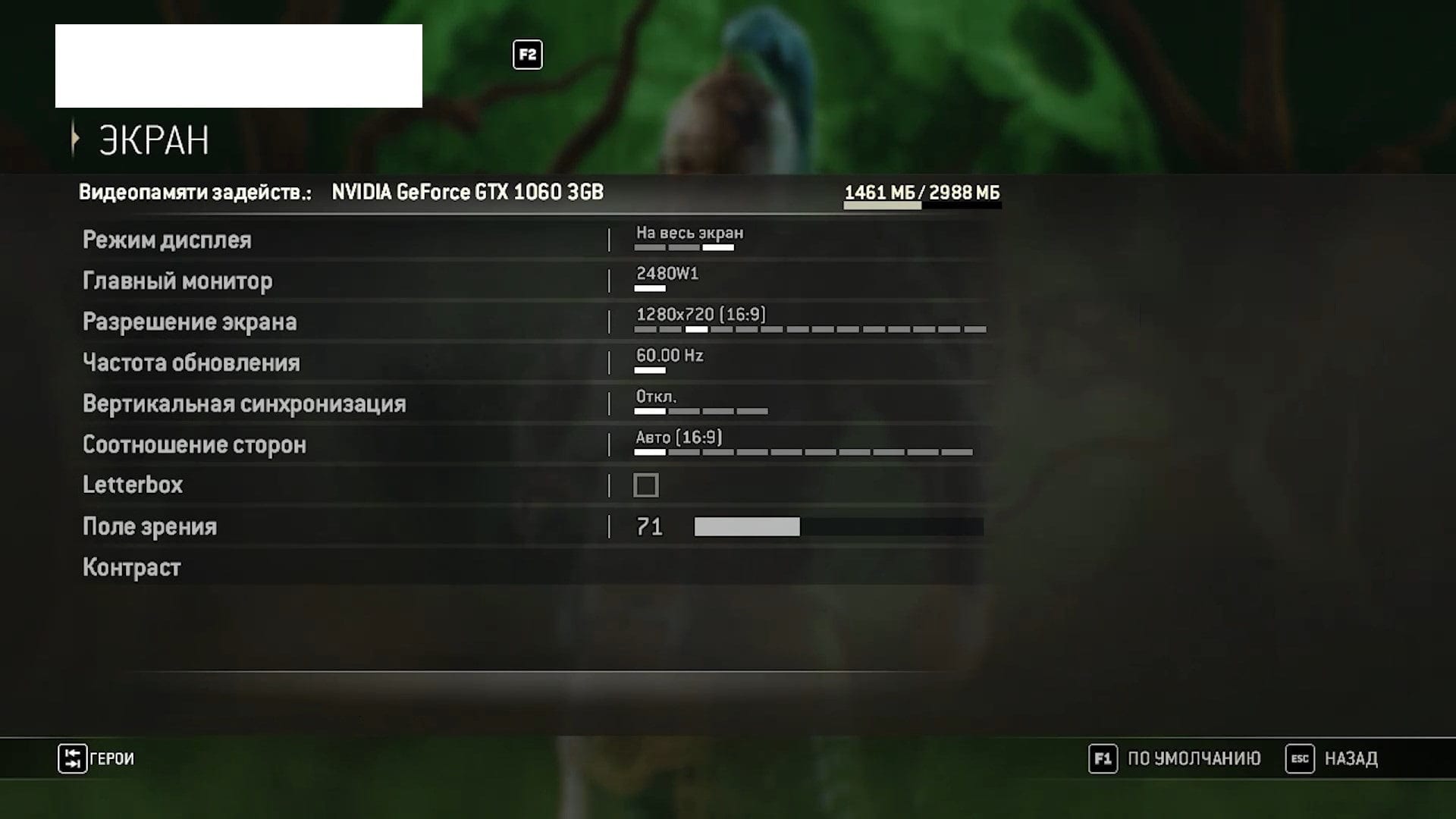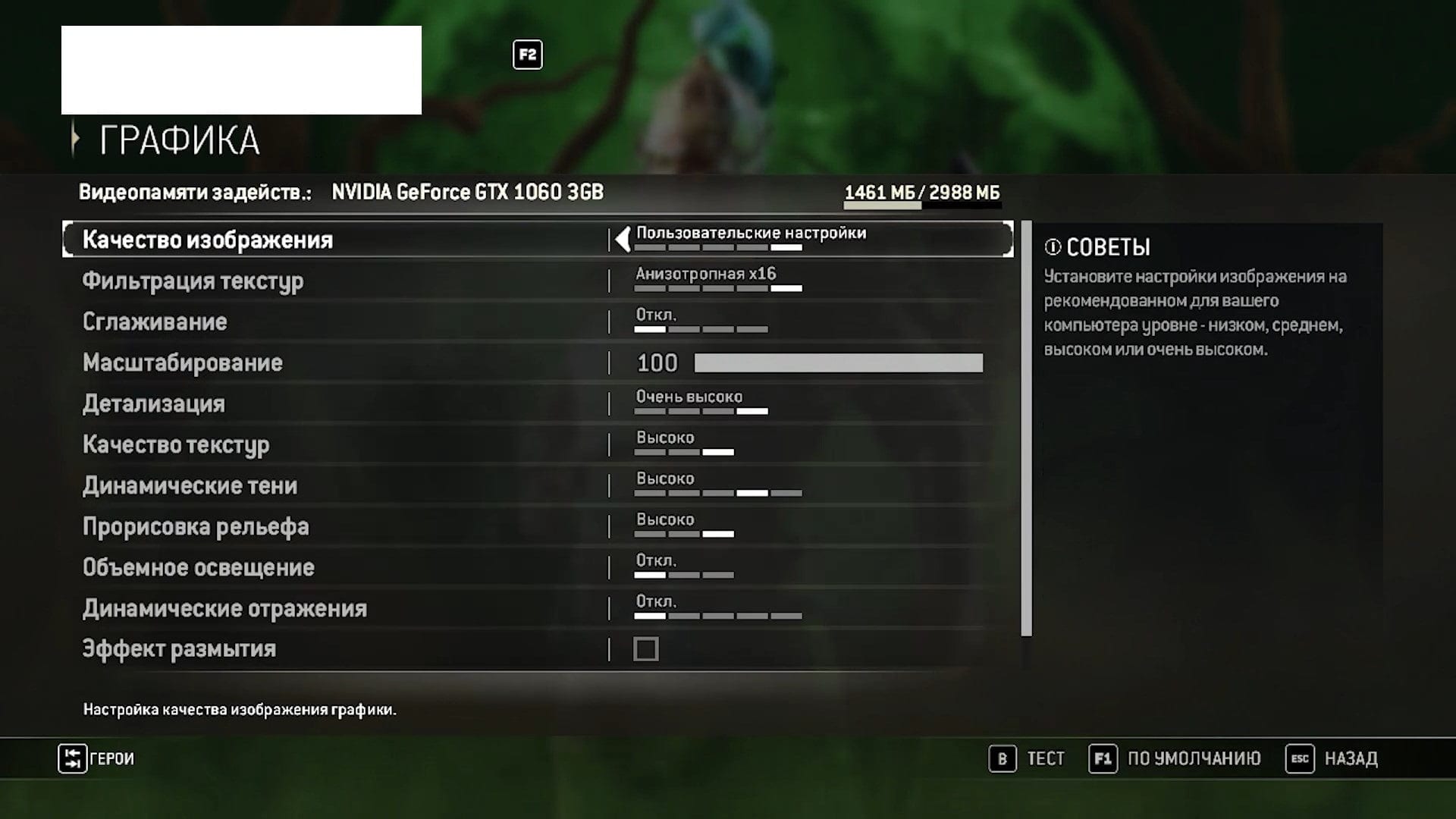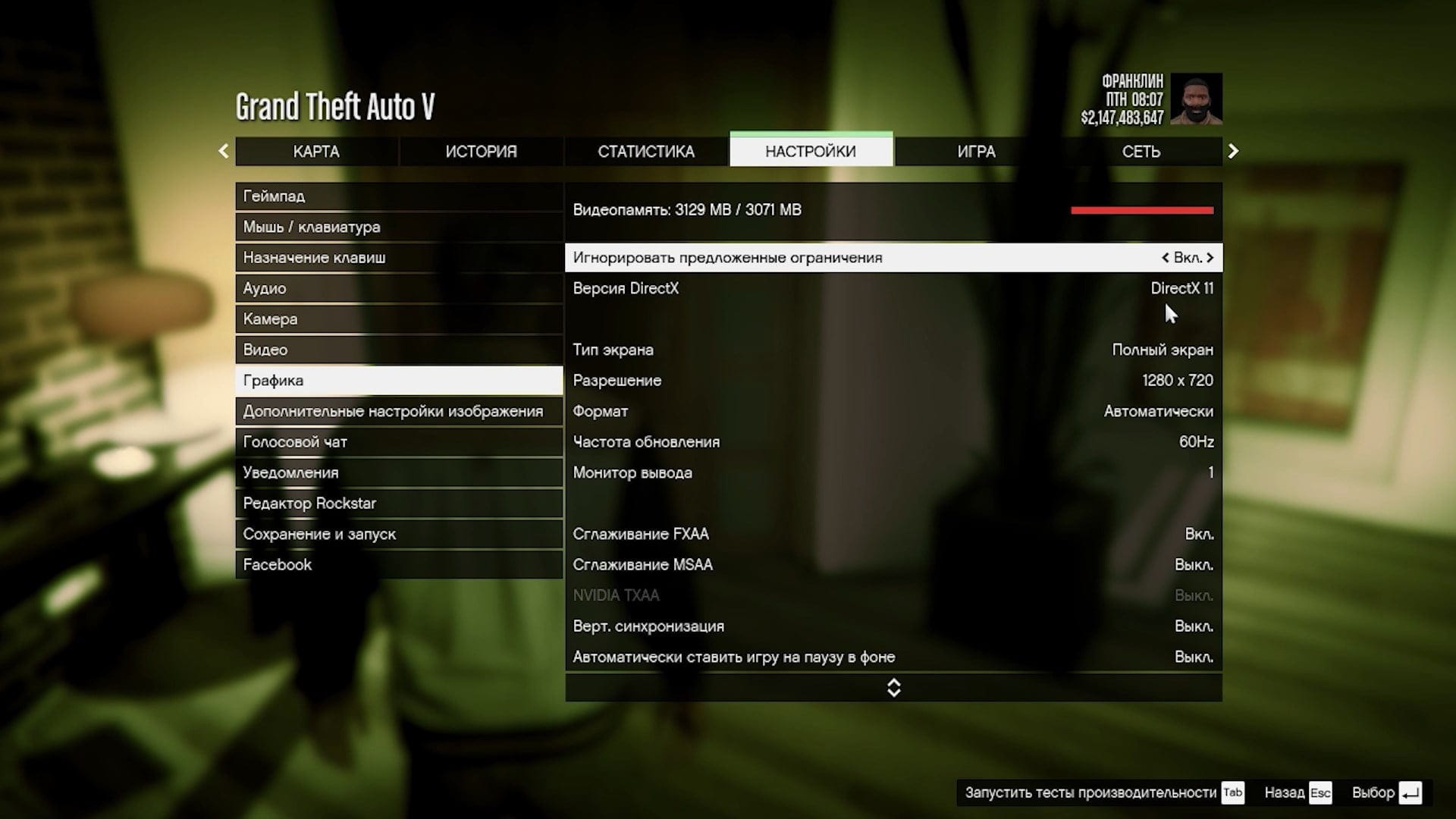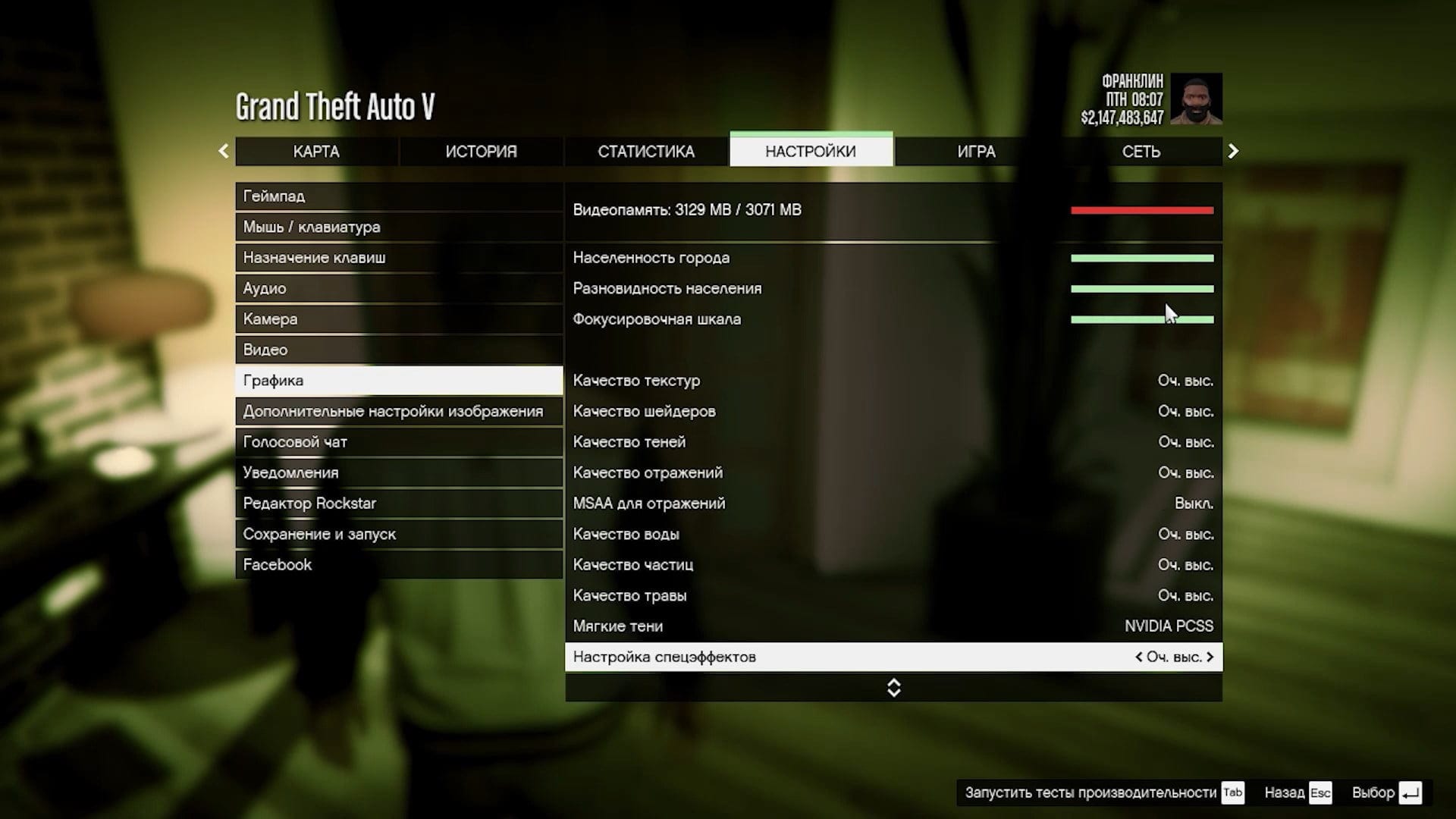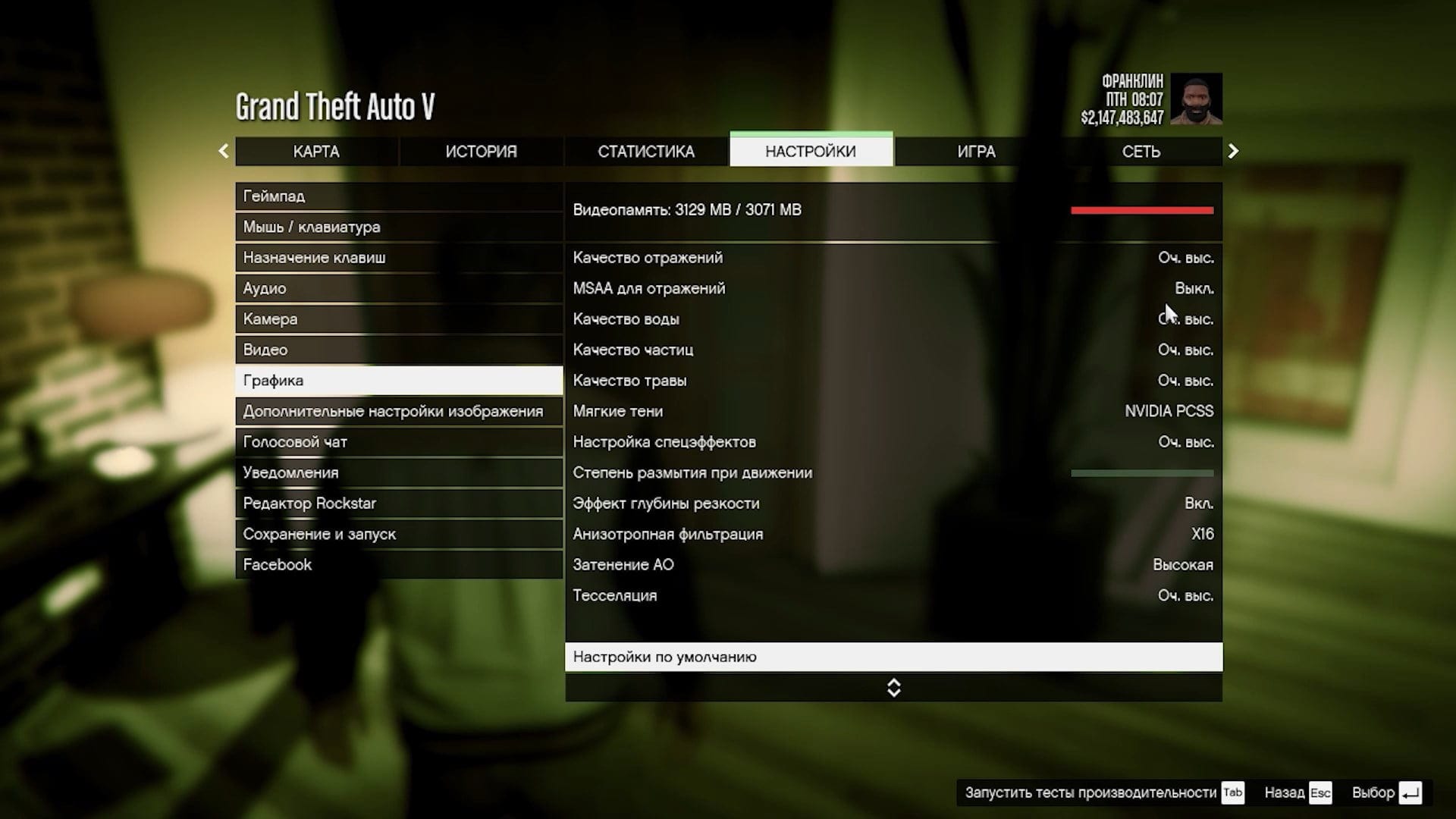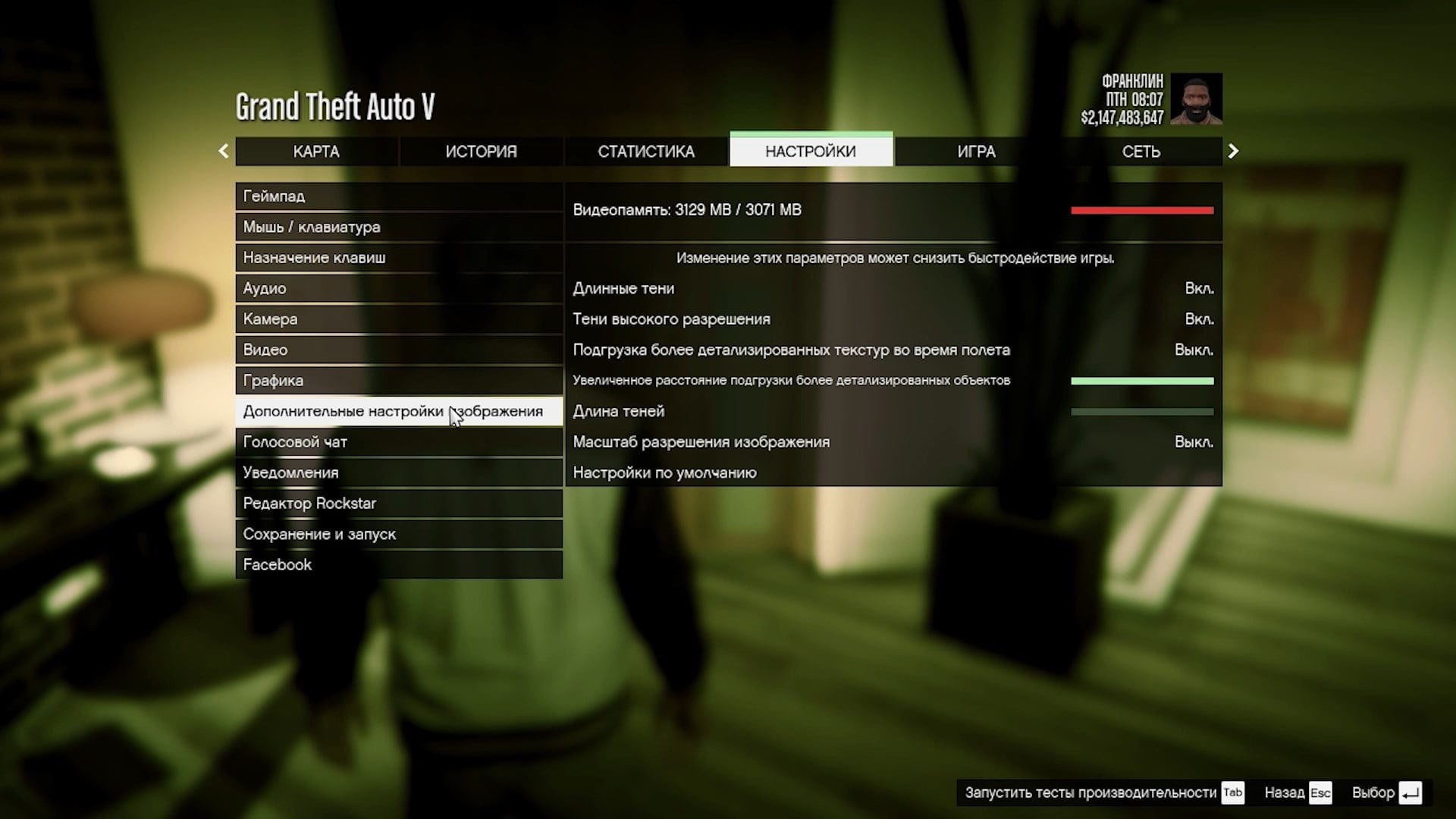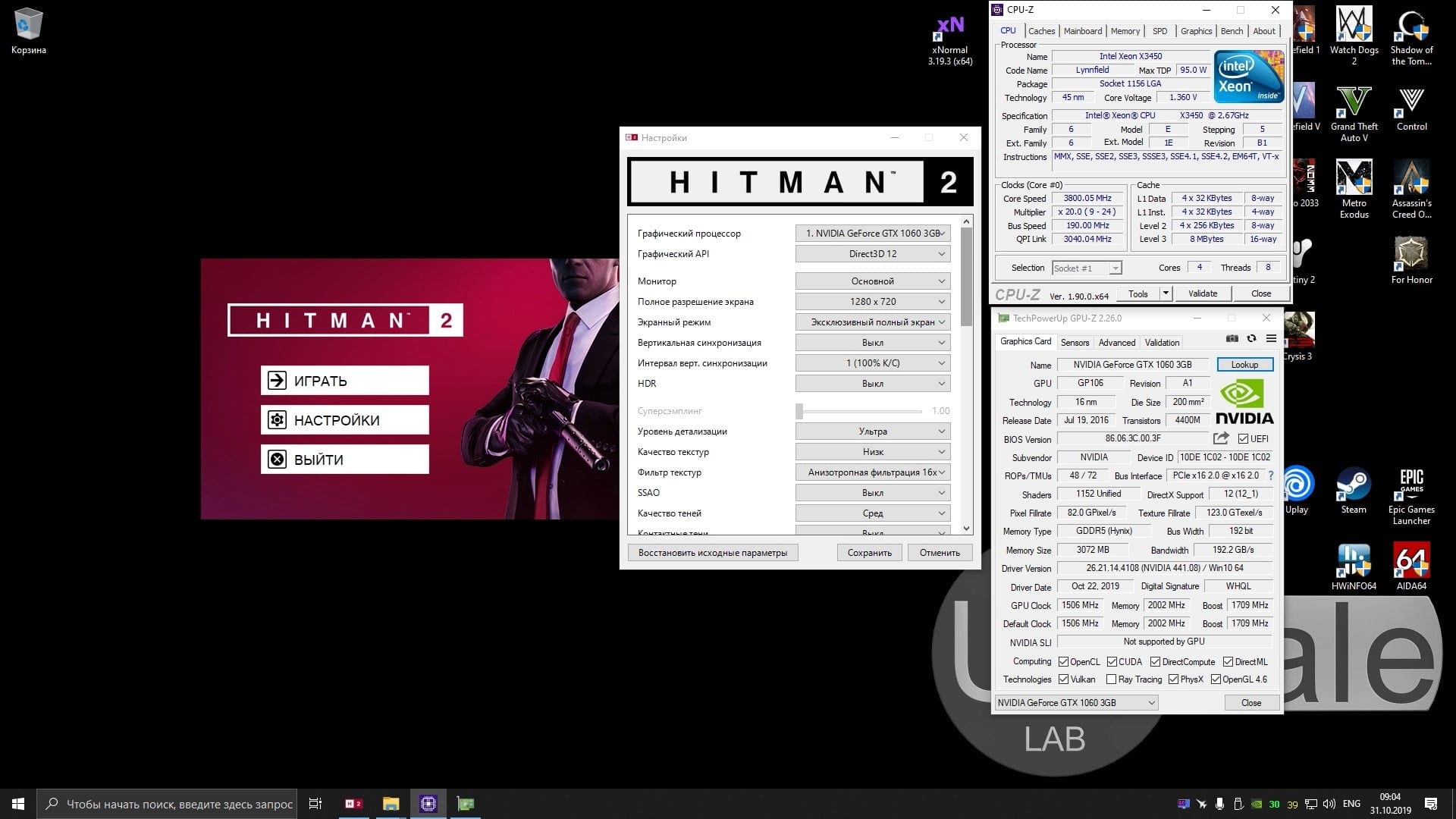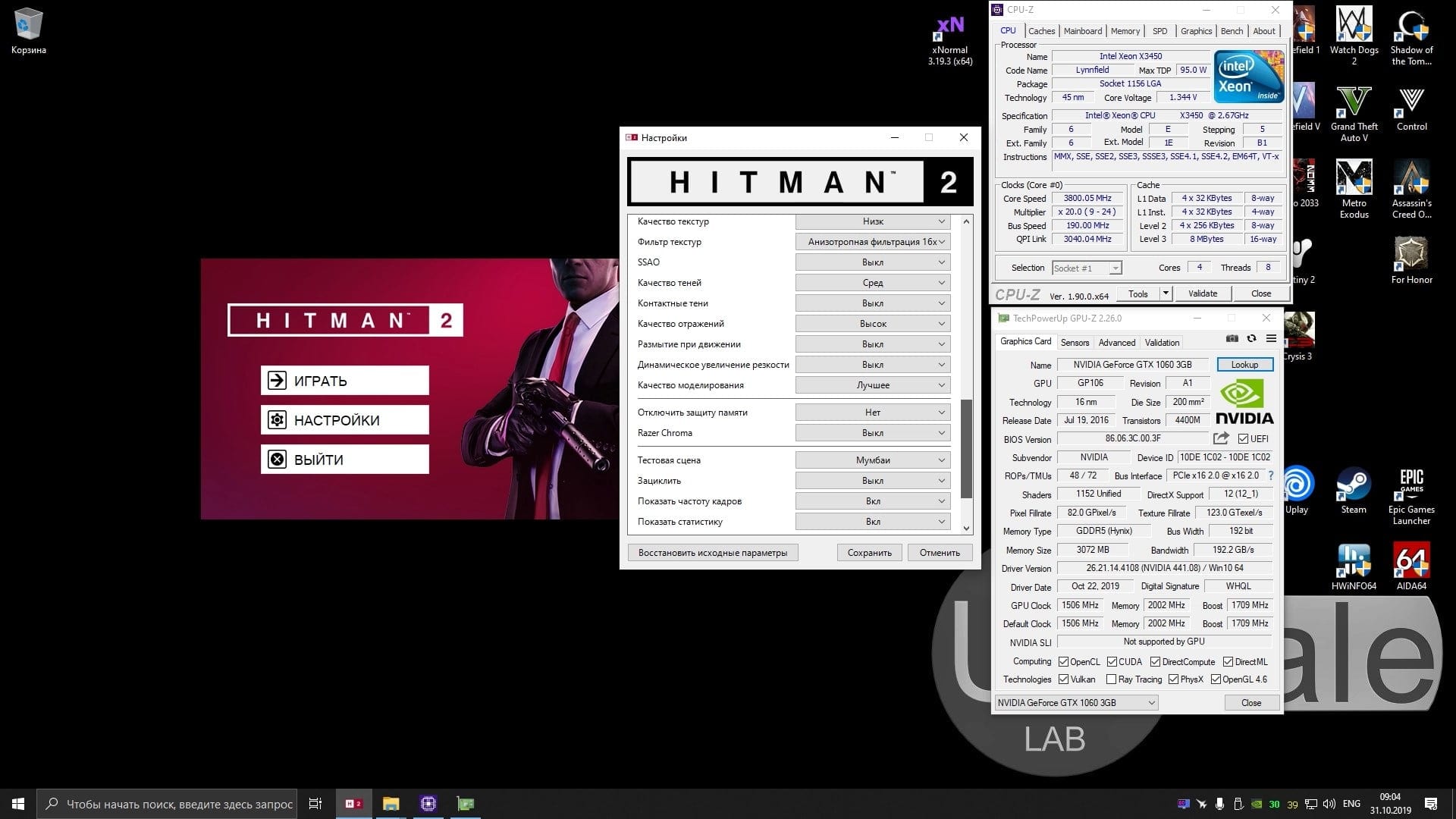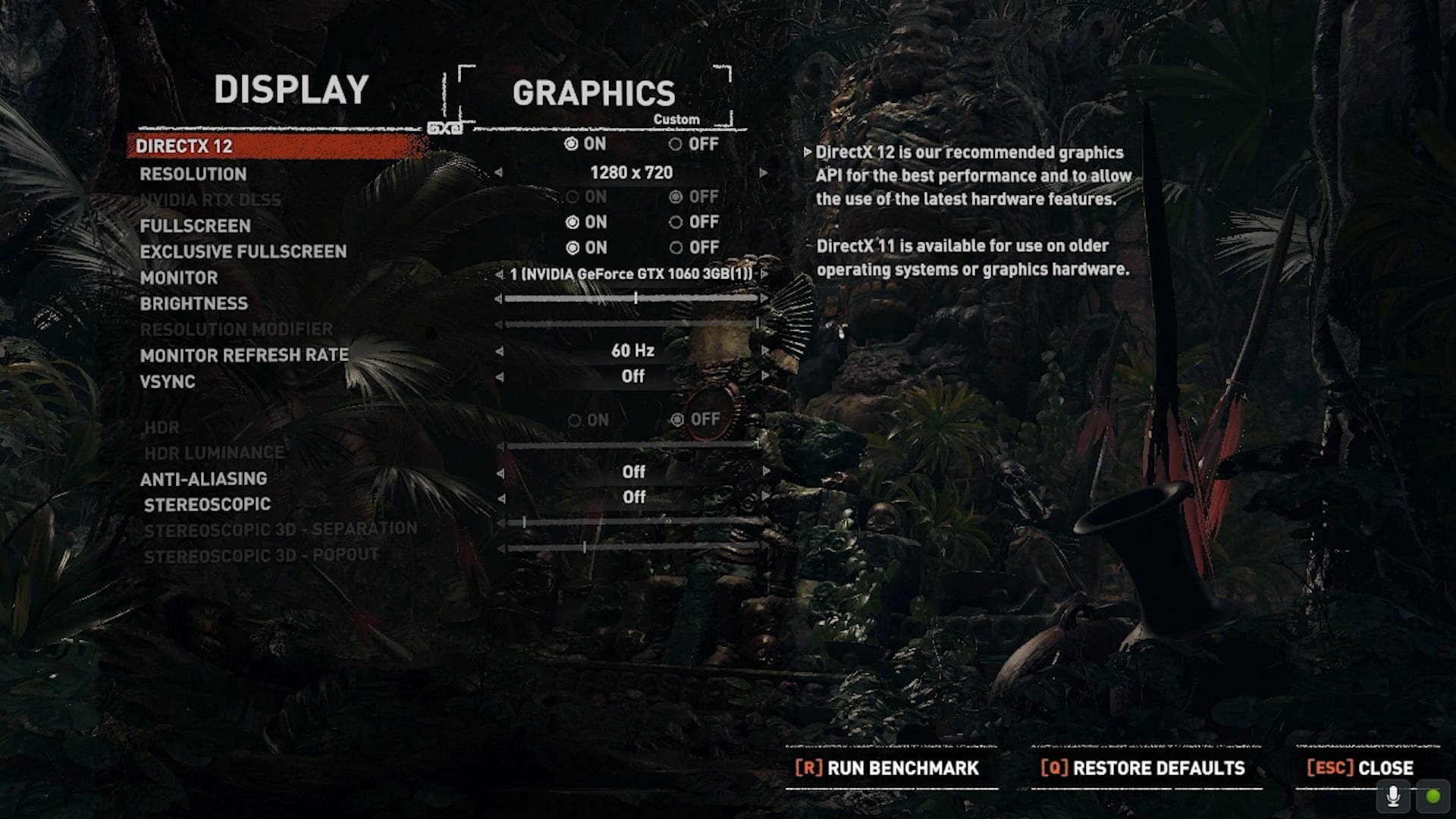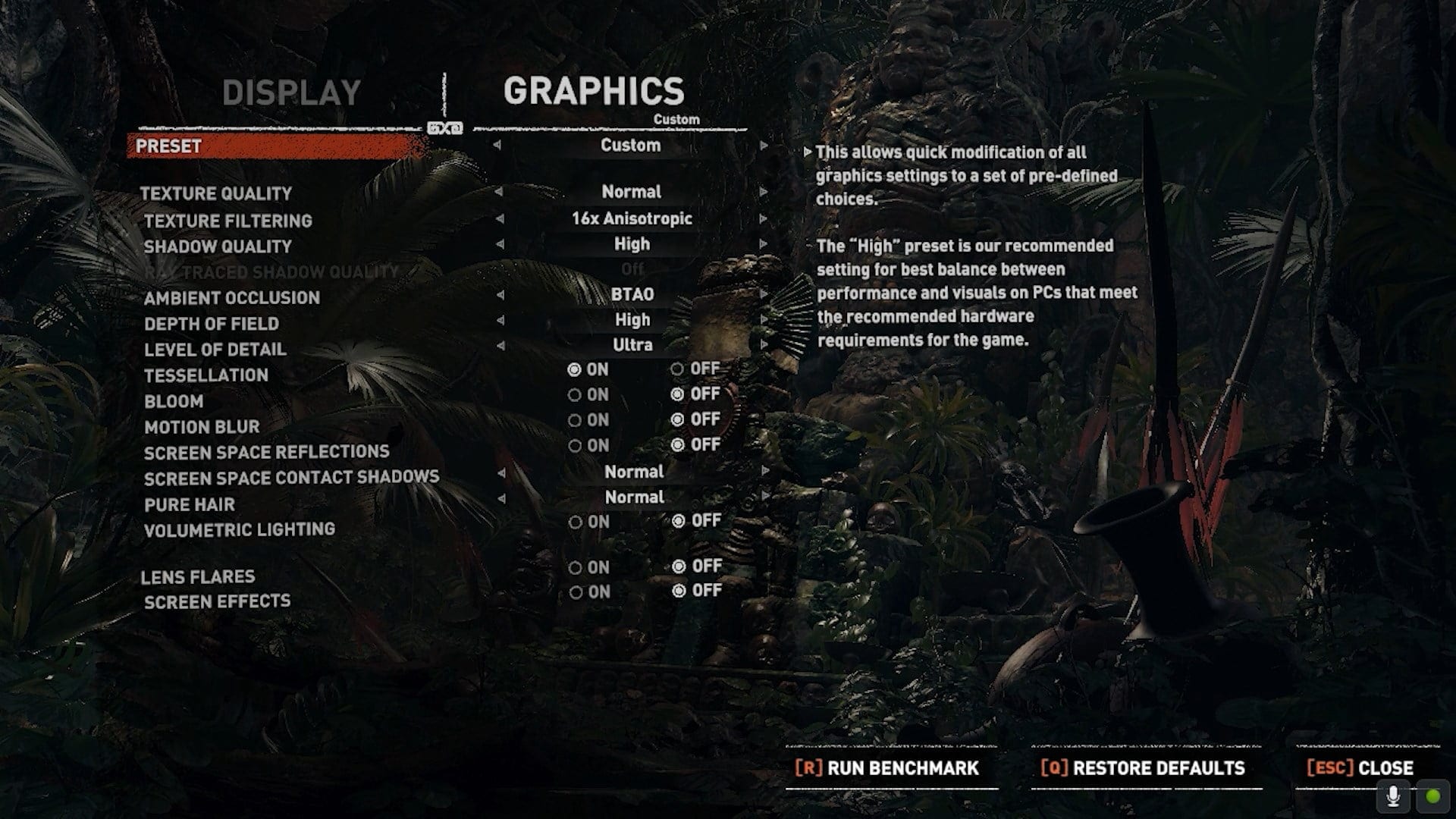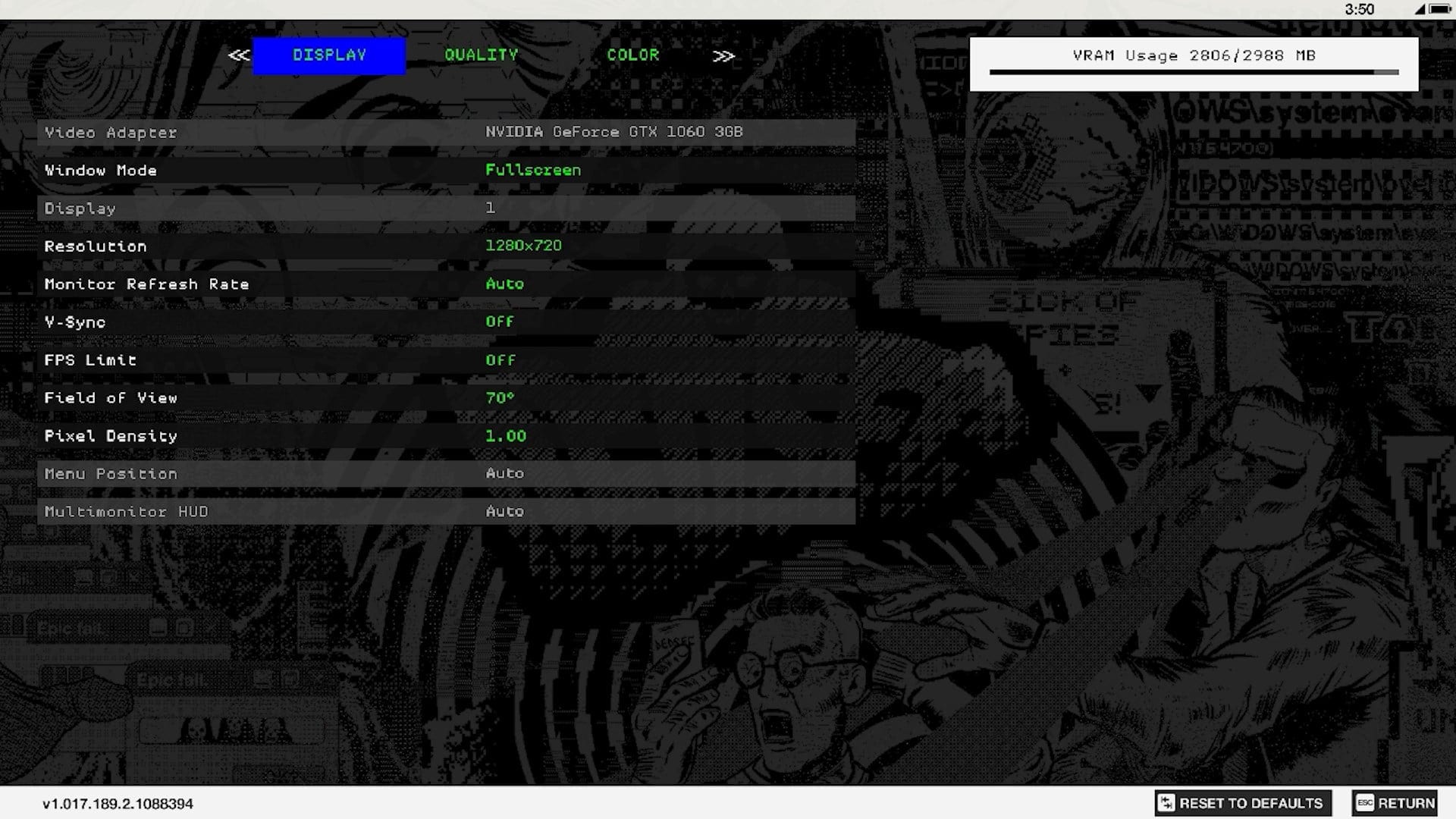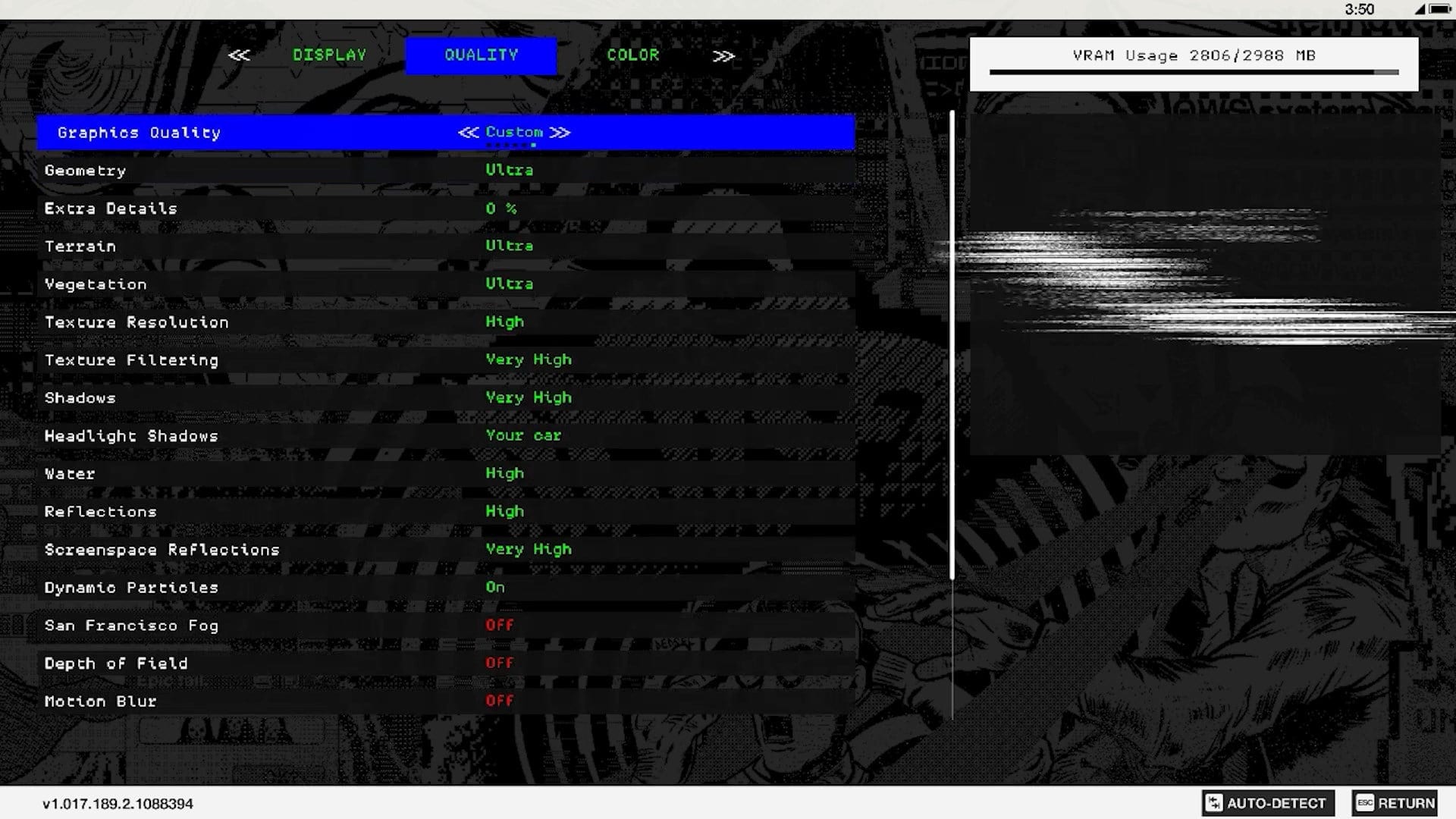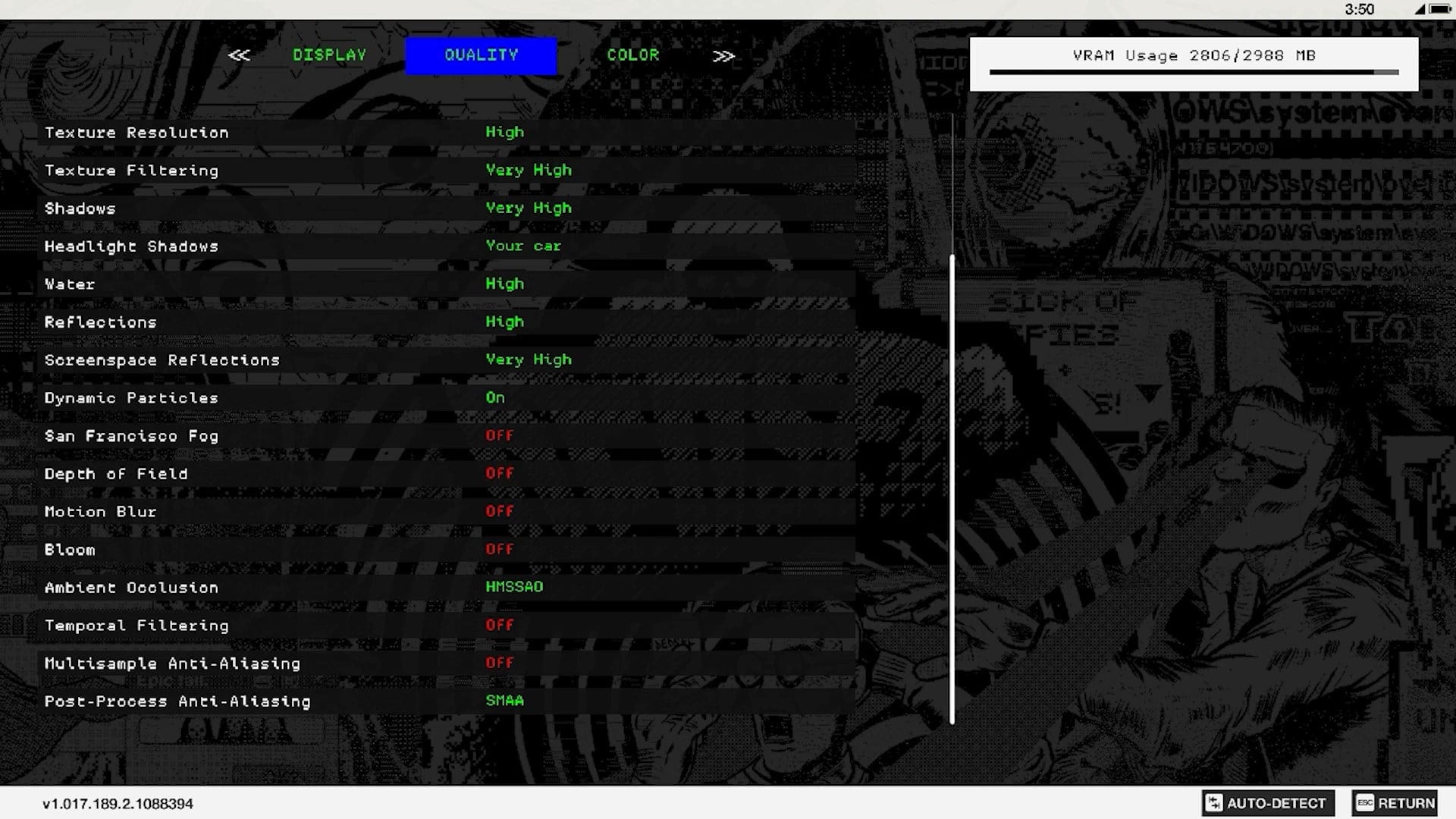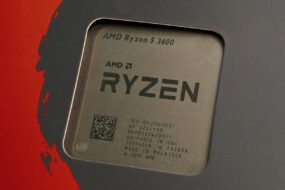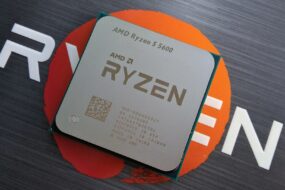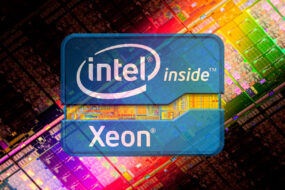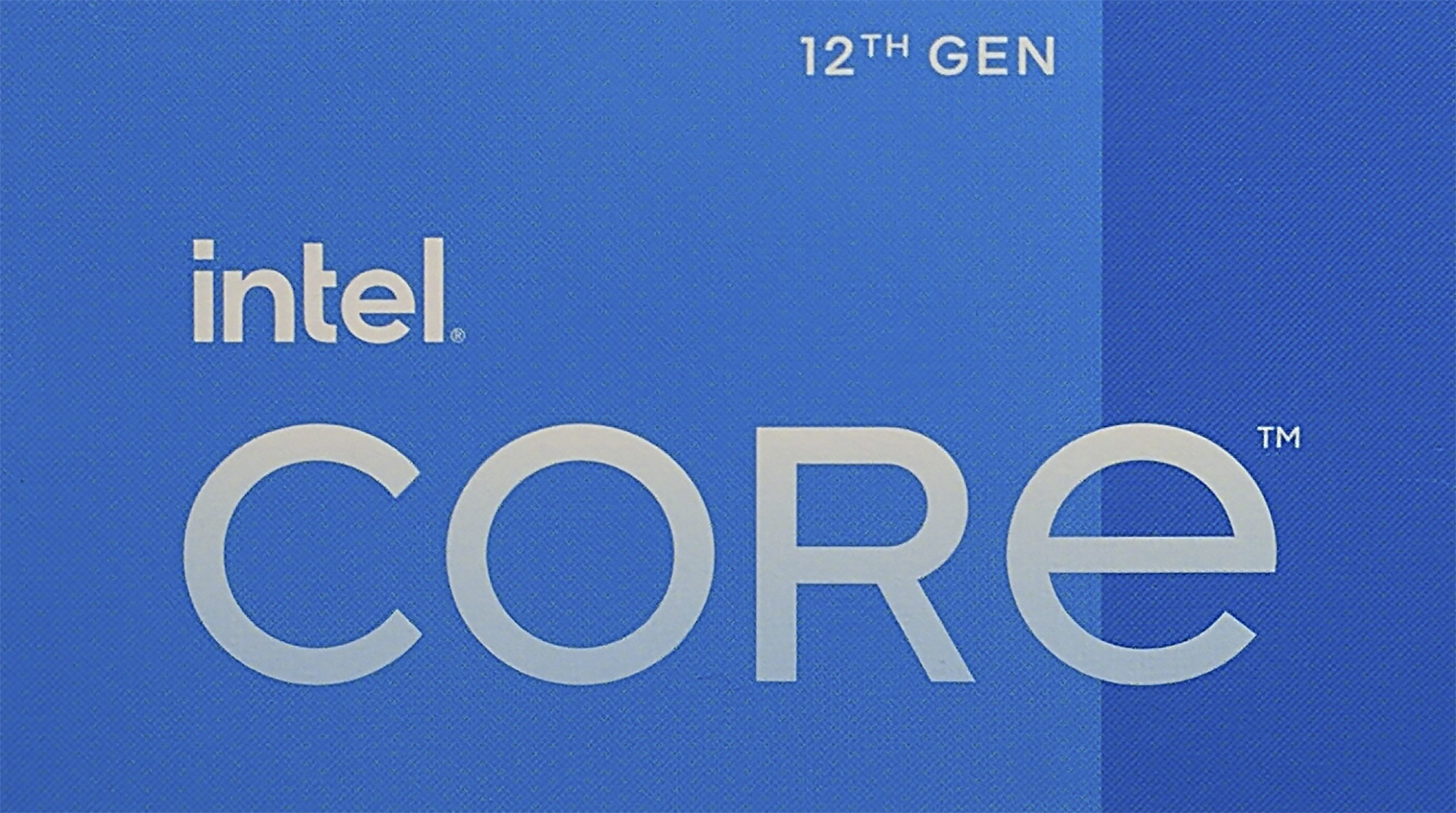
Initially, this material was supposed to be express testing, but as the game and then software tests were carried out, there were more and more pretexts to write a slightly more detailed article.
To begin with, the Xeon E5-2643 is a rather unpopular chip in the aftermarket. And the reasons for this phenomenon, at least before the test started, were not particularly clear to me. In fact, in addition to the obvious and unreasonably expensive E5-1620, the E5-2643 is the closest analog of the Core i7-2600 processor adored by many users, except that Xeon is designed for the LGA 2011 platform.
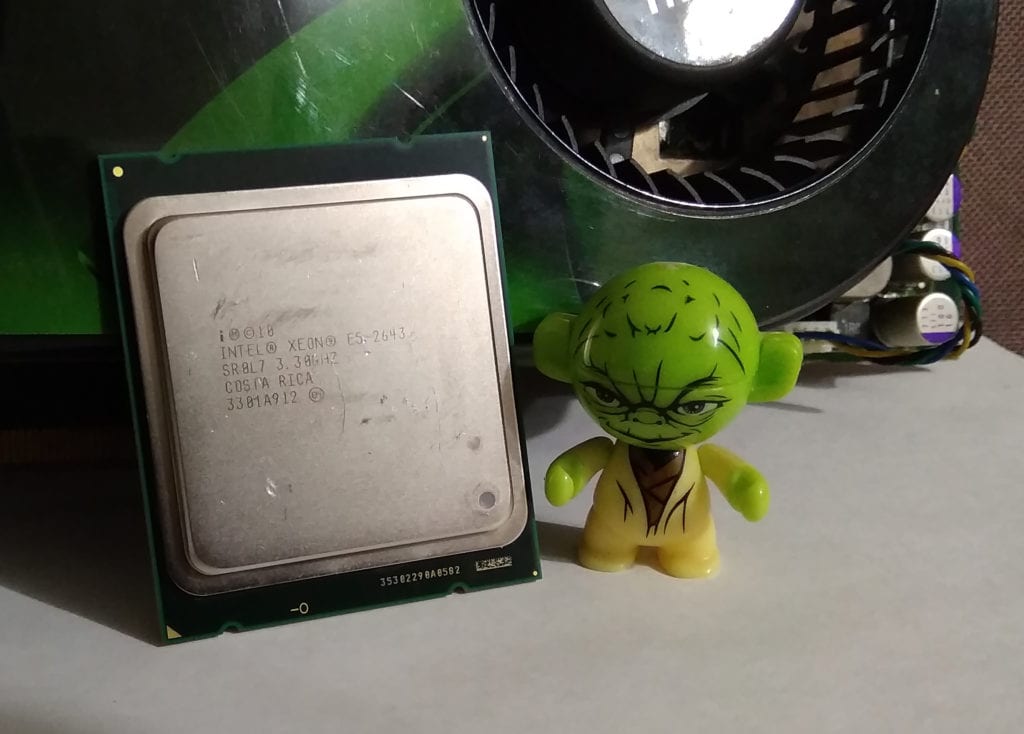
Of course, we can appeal by the fact that there is a free multiplier on the side of the Xeon E5-1620, but in the realities of 2019, this advantage will in no way be able to neutralize its modest number of cores by modern standards. In turn, the E5-2643, having the same four cores, eight threads, costs almost half as much as the E5-1620 and may well claim to be a “plug” for the LGA 2011 platform. After all, for example, buy the same 12-core, 24-thread E5-2697 v2 chip, a relatively good motherboard for it, and the RAM kit may not come out.
Comparing the Xeon E5-2643 to the Core i7-2600 does not make any sense at all, since the desktop processor has almost no advantages over its server brothers. You don’t need to look far for examples:
Motherboards for the LGA 1155 socket are either more expensive than Chinese motherboards for LGA 2011, or about the same, being at the same time used. And for the price of a desktop 8GB DDR3 memory stick, you can get a whopping 32GB of cheap register memory, compatible only with the Xeon series.
But the final choice, of course, is yours. I just gave several arguments in favor of a more profitable platform, in my humble opinion. And these words apply not only to LGA 2011 but also to the more modern and increasingly popular LGA 2011 v3 platform. However, it already uses the current DDR4 memory, and indeed, this is a completely different story, to which we will definitely return soon.
Comparison table of Xeon E5-2643, E5-1620 and Core i7-2600 processors:
| Processor | Xeon E5-2643 | Xeon E5-1620 | Core i7-2600 |
| Connector | LGA 2011 | LGA 2011 | LGA 1155 |
| Base frequency | 3300MHz | 3600MHz | 3400MHz |
| Maximum frequency | 3500MHz | 3800MHz | 3800MHz |
| Maximum frequency on all cores | 3400MHz | 3700MHz | 3500MHz |
| Number of cores/modules | 4 | 4 | 4 |
| Number of threads | 8 | 8 | 8 |
| Technical process | 32nm | 32nm | 32nm |
| L2 cache (per core) | 256KB | 256KB | 256KB |
| L3 cache (shared) | 10MB | 10MB | 8MB |
| L3/CP frequency | related to cores | related to cores | related to cores |
| TDP | 130 watt | 130 watt | 95 watt |
| Memory controller | 4-channel | 4-channel | 2-channel |
| Multiplier | Locked | Unlocked | Locked |
| Price (Aliexpress) | 20-30$ | 35-45$ | 50-70$ |
Processor
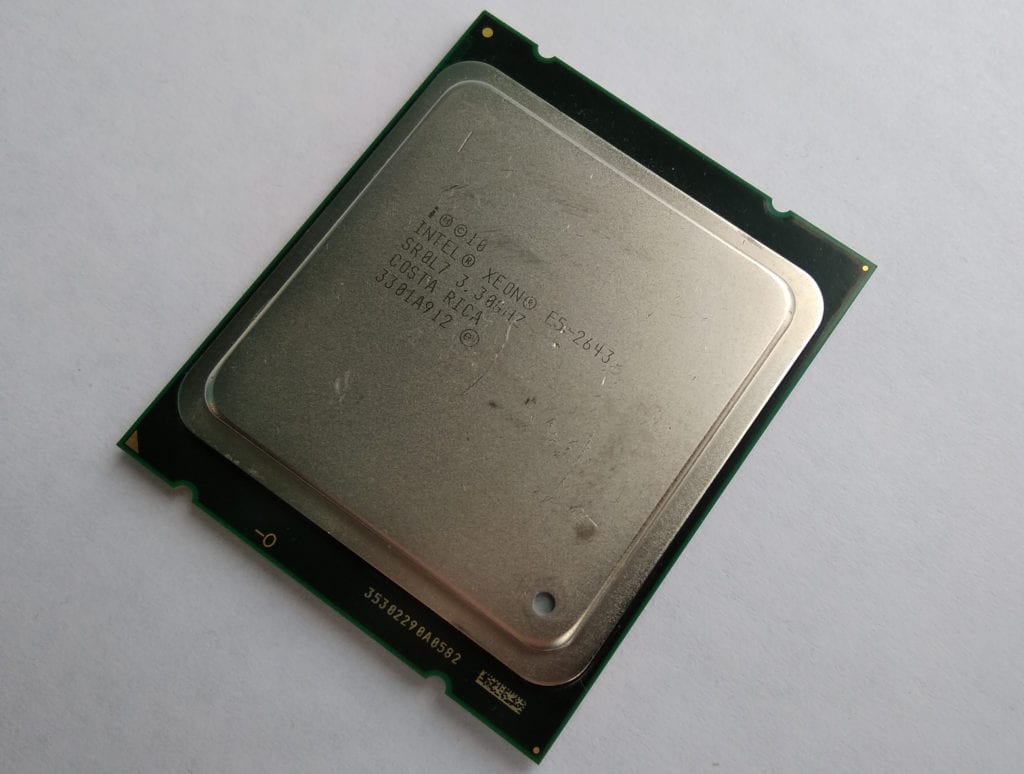
The marking of our test unit is SR0L7. The base frequency of the chip is 3300MHz, but thanks to Turbo Boost technology, it can grow up to 3400MHz for all cores, and the maximum achievable frequency for one core is 3500MHz.
Here is the first difference between the E5-2643 and the i7-2600 – the latter has frequencies of 4 cores higher by 100 MHz and is 3500 MHz. The single-threaded boost of the i7-2600 is also higher – 3800 MHz versus 3500 MHz for the E5-2643, but at the end of 2019, this cannot be considered a significant advantage.
The second difference is obviously a 2MB increase in the amount of L3 cache in the E5-2643 (10MB) compared to the i7-2600 (8MB). And last but not least – the 4-channel memory controller in our experiment versus the 2-channel in the desktop Core i7.
The CPU-z utility confirms all of the above characteristics. Except for the frequency – due to the characteristics of the DELL T3610 motherboard, it is slightly lower than the base and it is 3390 MHz:
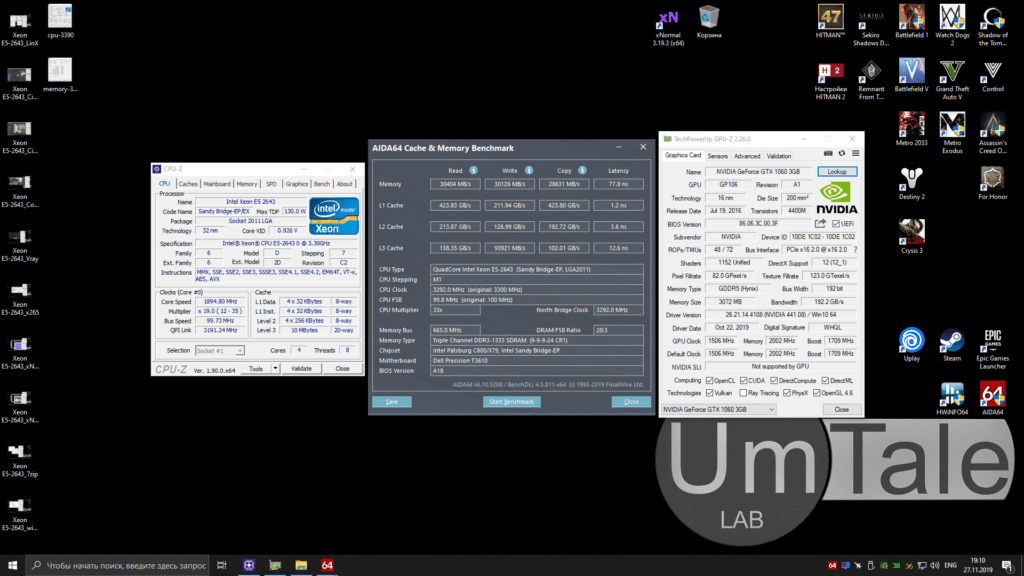
In the vastness of the Aliexpress online store, the price of the Xeon E5-2643 varies quite a lot, but still, it is quite possible to purchase it for the $20-30 below:

Testing features
The Xeon E5-2643 processor supports 4-channel DDR3 RAM, but we were unable to get the fourth strip of registered memory and had to test with only three modules. In general, given the relatively small number of cores of the test subject, this should not matter much, because, for example, the same Core i7-2600 is completely satisfied with dual-channel DDR3. But, in any case, keep in mind the above-described feature of this material.
Opponents
You can get acquainted with the review and overclocking of the rest of the test participants in the first material of the November bench session.
Comparison table of test processors:
| Processor | Xeon X5660 | Xeon X5570 | Xeon E5-2643 | Core i5-2500K | Xeon X3450 | Xeon X3470 |
| Connector | LGA 1366 | LGA 1366 | LGA 2011 | LGA 1155 | LGA 1156 | LGA 1156 |
| Base frequency | 2800MHz | 2933MHz | 3300MHz | 3300MHz | 2667MHz | 2933MHz |
| Maximum frequency | 3200MHz | 3325MHz | 3500MHz | 3700MHz | 3200MHz | 3600MHz |
| Maximum frequency on all cores | 3066MHz | 3200MHz | 3400MHz | 3400MHz | 2800MHz | 3200MHz |
| Number of cores/modules | 6 | 4 | 4 | 4 | 4 | 4 |
| Number of threads | 12 | 8 | 8 | 4 | 8 | 8 |
| Technical process | 32nm | 45nm | 32nm | 32nm | 45nm | 45nm |
| L2 cache (per core) | 256KB | 256KB | 256KB | 256KB | 256KB | 256KB |
| L3 cache (shared) | 12MB | 8MB | 10MB | 6MB | 8MB | 8MB |
| L3/CP frequency | 2666MHz | 2666MHz | related of cores | related of cores | 2133MHz | 2400MHz |
| TDP | 95 watt | 95 watt | 130 watt | 95 watt | 95 watt | 95 watt |
| Memory controller | 3-channel | 3-channel | 4-channel | 2-channel | 2-channel | 2-channel |
| Multiplier | Locked | Locked | Locked | Unlocked | Locked | Locked |
Test setup:
- Processors — Xeon E5-2643, Xeon E5506, Xeon X3450, Xeon X3470, Xeon X5570, Xeon X5660, and Core i5-2500K
- Cooling — Cooler Master Hyper 212 Black Edition (RR-212S-20PK-R1)
- RAM for LGA 2011 — 3 x 8GB Micron MT36JSF1G72PZ-1G4M1HF for a total of 24GB
- RAM for LGA 1366 — 3 x 8GB HyperX Genesis Na’Vi Edition (KHX16C9C2K2/8) for a total of 24GB
- RAM for LGA 1155 — 2 x 8GB HyperX Genesis Na’Vi Edition (KHX16C9C2K2/8) for a total of 16GB
- RAM for LGA 1156 — 2 x 8GB HyperX Genesis Na’Vi Edition (KHX16C9C2K2/8) for a total of 16GB
- Motherboard LGA 2011 — DELL T3610 (09M8Y8)
- Motherboard LGA 1366 — DELL T3500 (09KPNV)
- Motherboard LGA 1155 — Gigabyte GA-Z68P-DS3 (rev. 2.0)
- Motherboard LGA 1156 — Gigabyte H55M-USB3
- Video card — Palit GeForce GTX 1060 DUAL 3GB (1506/1709/8000MHz, Power Limit 115%)
- Solid state drive — KINGSTON 120GB SA400S37120G (Windows 10 1903/App)
- HDD — Seagate 2TB ST2000DM008-2FR102 (Games)
- Power supply — Chieftec GPS-1250C
Software:
- Windows 10 Pro v1903 x64
- CPU-z v1.90.0 x64
- AIDA64 v6.10.5200
- NVIDIA GeForce Game Ready Driver 441.08 WHQL
- V-Ray Benchmark v4.10.03
- Corona Benchmark v1.3
- Cinebench R15.38
- Cinebench R20.060
- xNormal 3.19.3.39669 x64 (NM Map anti-aliasingx4, AO Map anti-aliasing x1)
- HWBot x265 Benchmark v2.0.0
- WinRar v5.8 Beta 2 x64
- 7-Zip v19.0 x64
Games and graphics settings:
Testing in applications
Overall performance
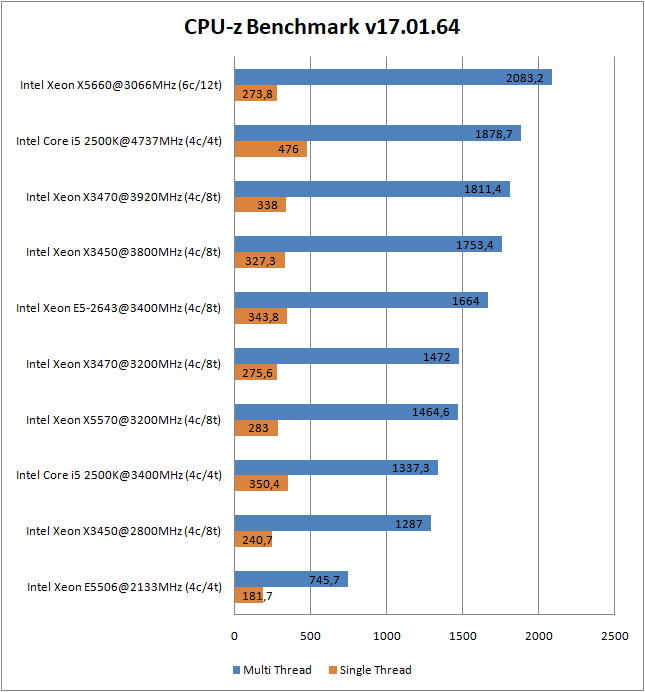
The first test and immediately quite interesting results. In the benchmark of the most popular information utility CPU-z, it turned out that high performance in a single-threaded test does not guarantee victory in a multi-threaded one. Otherwise, how can one explain the fact that with the same number of cores/threads the Xeon X3450 at 3800 MHz was able to overtake the Xeon E5-2643 while having a slightly lower indicator in the single-threaded test?
Rendering, Synthetics
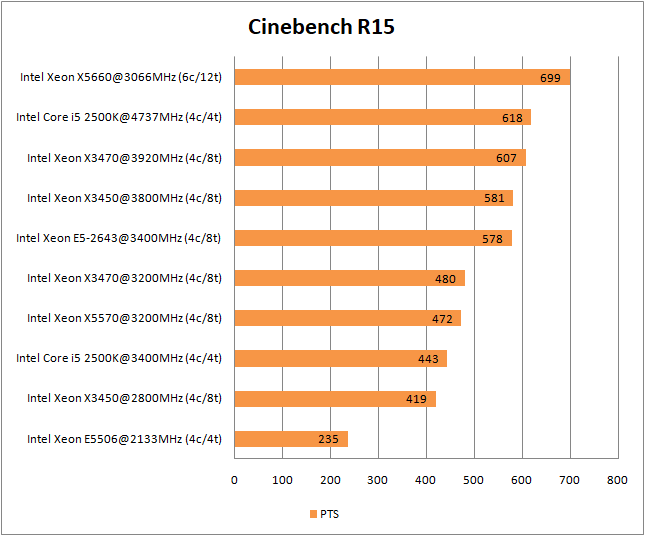
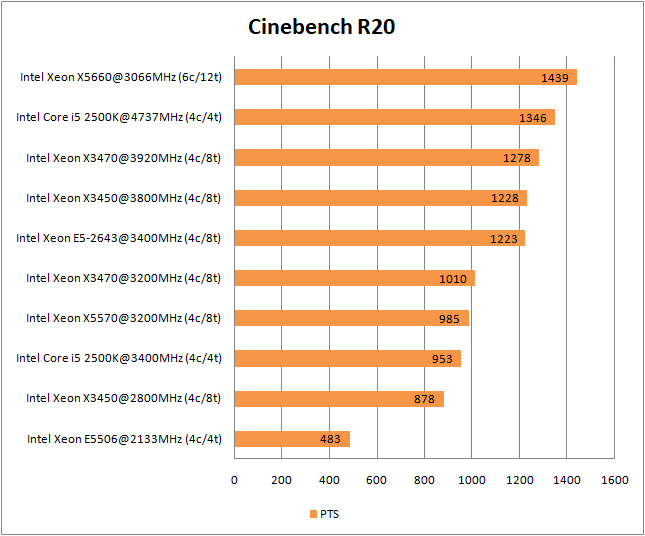
In relatively synthetic tests Cinebench, E5-2643 easily cracks down on both representatives of the Lynnfield family operating in base mode, however, it is still too tough to surpass the overclocked versions of the latter. But the superiority of the Sandy Bridge architecture over its predecessor Nehalem is easy to see here.
Rendering
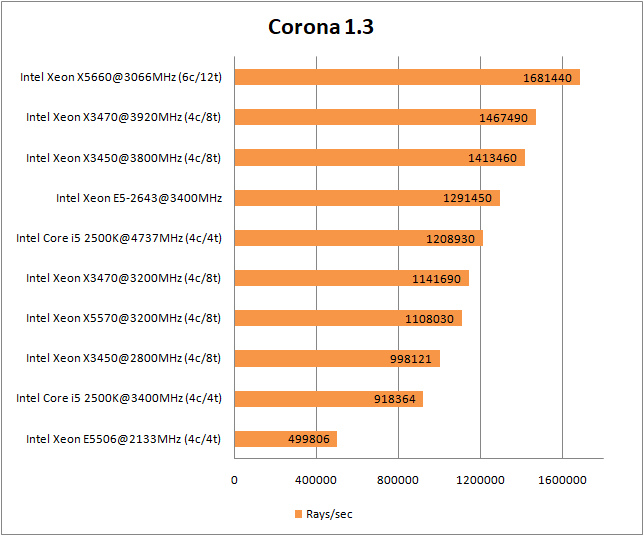
I have already mentioned in previous materials that Corona has not been updated for a long time and the version of the benchmark presented in this material is simply not capable of reflecting the real state of affairs in the current version of the render itself. Therefore, the final values are quite predictable: due to the relatively low base frequency, the E5-2643 lagged behind the overclocked X3450 and X3470, and the 6-core 12-thread X5660 was completely out of reach for all test participants.
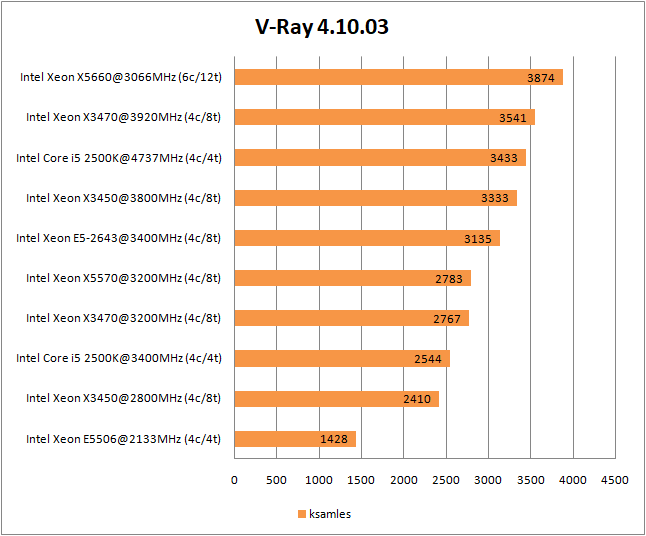
The V-Ray benchmark is updated much more often, and evaluating the results obtained, the advantage of the Sandy Bridge architecture is much more evident. However, even in this test the Xeon E5-2643 could not outperform the X3450 overclocked to 3800MHz, let alone the X3470 operating at 3920MHz.
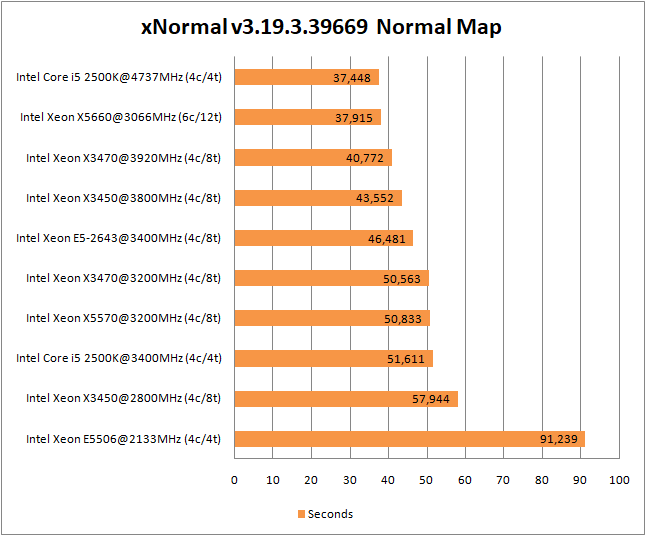
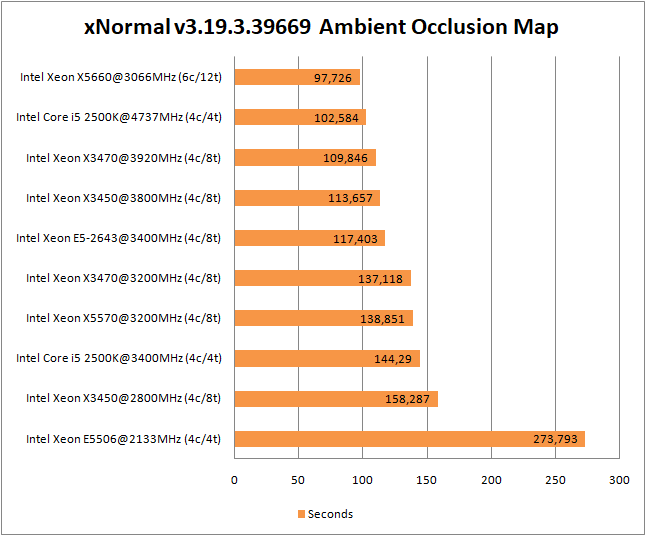
In xNormal, the situation is repeated. Although the advantage of the E5-2643 over the stock rivals is quite high, the overclocked versions of the representatives of the LGA 1156 platform demonstrate a little more confident results.
Video encoding
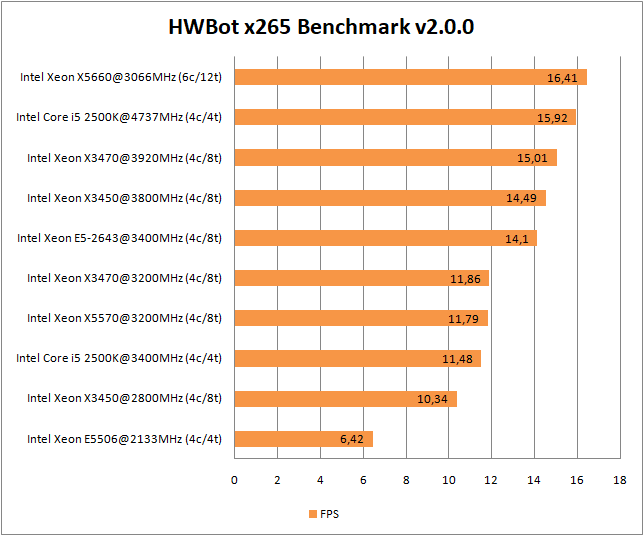
Encoding video to the x265 format with the HWBot x265 Benchmark didn’t bring any surprises either. Even the advantage in supporting AVX instruction extensions did not help the E5-2643 outperform overclocked opponents. But in this case, it is the results of the E5-2643 that look more confident. Indeed, among the stock processors, only the 6-core monster from the past, the X5660, was able to bypass it, while the rest showed a significant lag from 36% to 19%, excluding the E5506.
Archiving
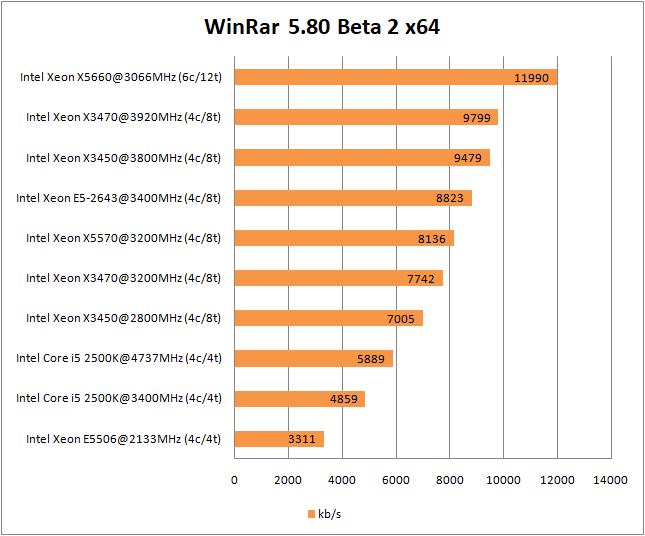
It would seem that in WinRar on the side of the E5-2643 processor there is also three-channel memory with a theoretical bandwidth of 30GB / s, and more modern architecture, and 10MB of L3 cache. But even in such a situation, it still could not surpass the overclocked versions of the Xeon X3450 and X3470, not to mention the X5660, whose performance is at some exorbitant level compared to all other CPUs.
But even with all this, the E5-2643 was able to bypass all processors (except for the X5660, of course) operating at base frequencies. For example, its closest pursuer Xeon X5570, which by the way also worked with three-channel DDR3, was able to overtake the E5-2643 by 8%, the X3470 by 12%, and the Core i5-2500K by an impressive 45%. The latter, of course, was able to slightly compensate for the lag by overclocking to 4737 MHz, but even in this case, it fell behind by 33%.
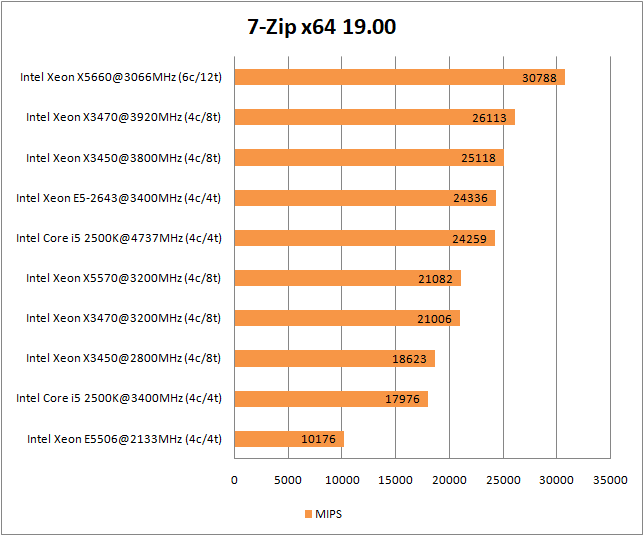
In 7-Zip the situation changed a little and the Xeon E5-2643 practically reached the overclocked X3450, but could not surpass it.
Nevertheless, for the umpteenth time the E5-2643 did not leave a stone unturned from its stock rivals, bypassing the closest pursuer by 13%, and Core i5-2500K by 26%. Xeon X5660 is once again playing in its own league without noticing opponents.
Testing in games
Frankly speaking, moving on to gaming applications, I expected the first places from the 8-thread representative of the Sandy Bridge architecture in almost every project. However, in the end, everything turned out to be not so rosy, which somewhat surprised me. But let’s jump straight to the results:
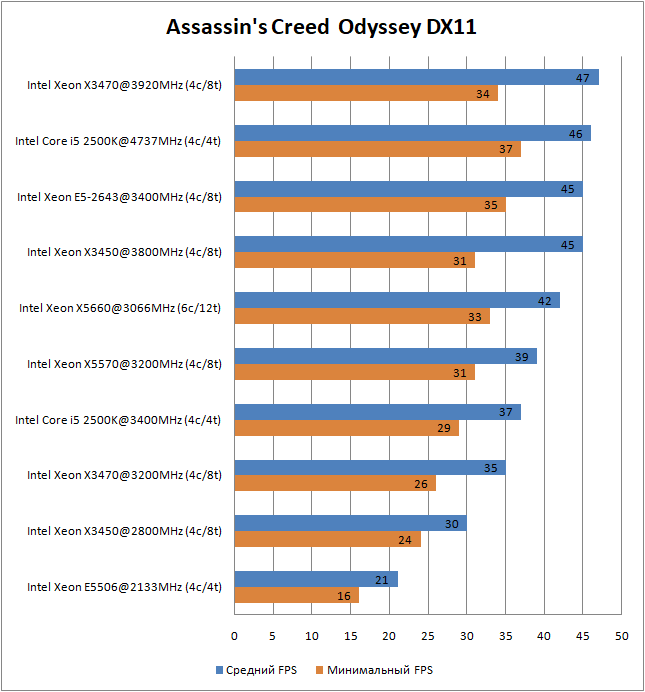
The first game Asassins Creed Odyssey demonstrates a fairly solid performance E5-2643. Let it slightly fall short of the overclocked X3470 in terms of the average FPS value, but in terms of the minimum indicator it significantly outperformed its opponent.
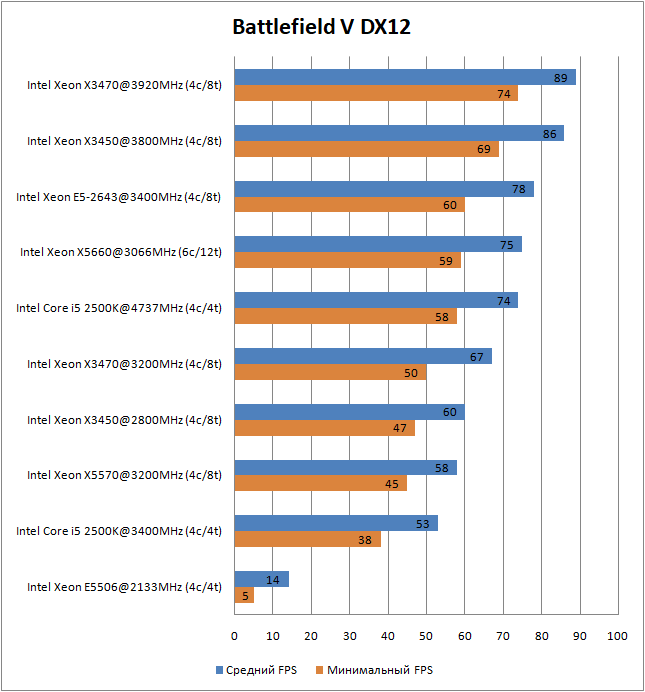
But the fifth part of the famous Battlefield franchise seriously surprised me. The Xeon E5-2643 managed to bypass all processors operating in the base mode, but it lagged far behind the overclocked representatives of LGA 1156. The X3470 operating at 3920 MHz was able to overtake the E5-2643 by 15%. It seems like the BF5 doesn’t really take advantage of Sandy Bridge’s architectural improvements.

The results in Destiny 2 are quite logical because the game engine has an extremely negative attitude to Hyper-Threading technology, so the Core i5-2500K devoid of HT shows slightly more confident results compared to the equal-frequency Xeon E5-2643.
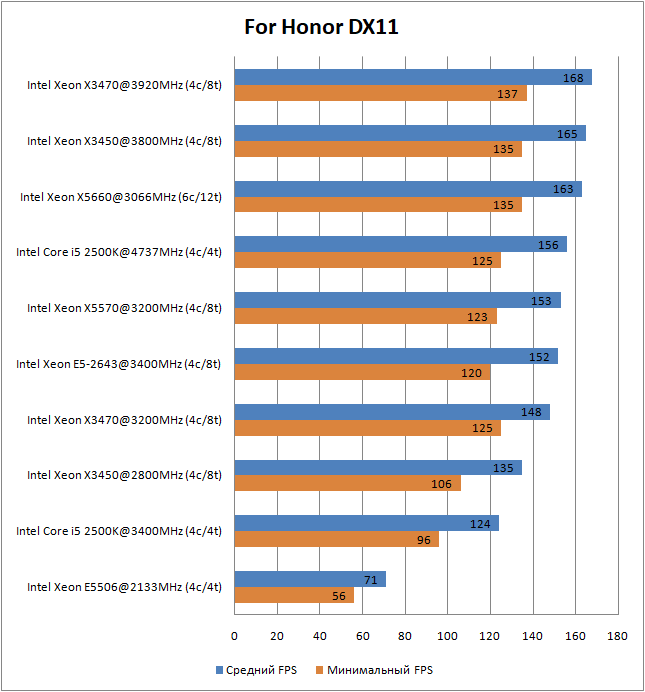
The results from For Honor are a little discouraging. The Xeon E5-2643 turned out to be slower than the X5570, and in terms of the minimum FPS, it was inferior even to the stock X3470. But there can be no mistake since I use the standard technique with three runs of the benchmark followed by choosing the average result. Plus, just in case, I rebooted the system and ran the benchmark again, but the fourth run changed almost nothing.
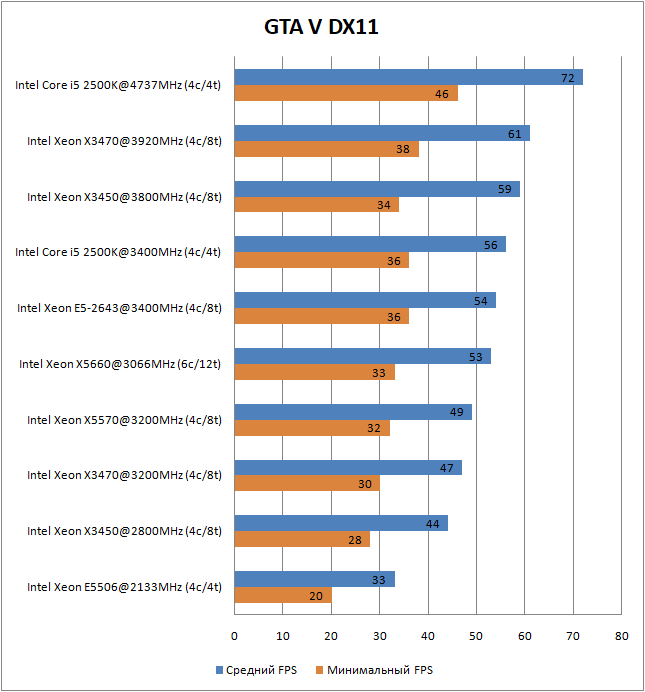
The GTA 5 benchmark couldn’t surprise me with anything. The results obtained in the creation of the Rockstar studio are somewhat similar to those in Destiny 2. The game can also use only 4 threads and the performance of the Xeon E5-2643 was quite predictable here. The only exception is that he was still able to overtake the X5660.
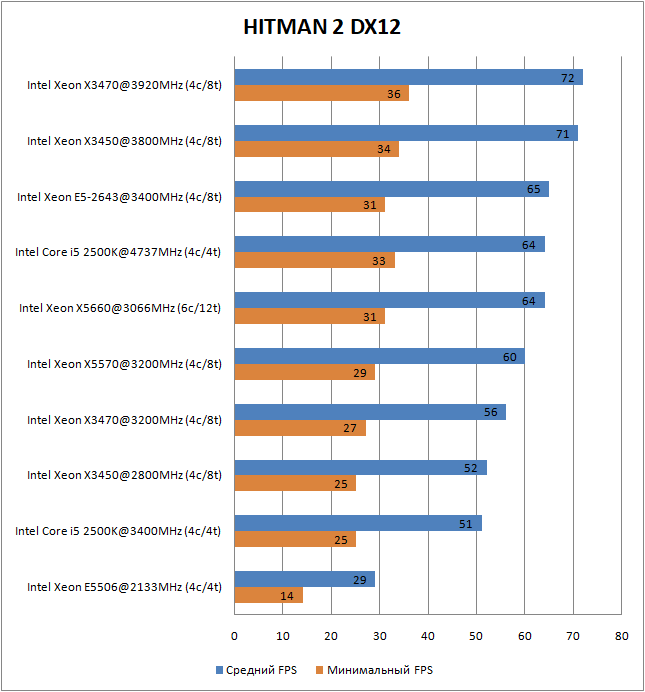
In Hitman 2, the E5-2643 chip was also able to outrun all stock opponents, but again it was unable to resist the overclocked representatives of the LGA 1156 platform. The X3450 and X3470 are out of the competition.
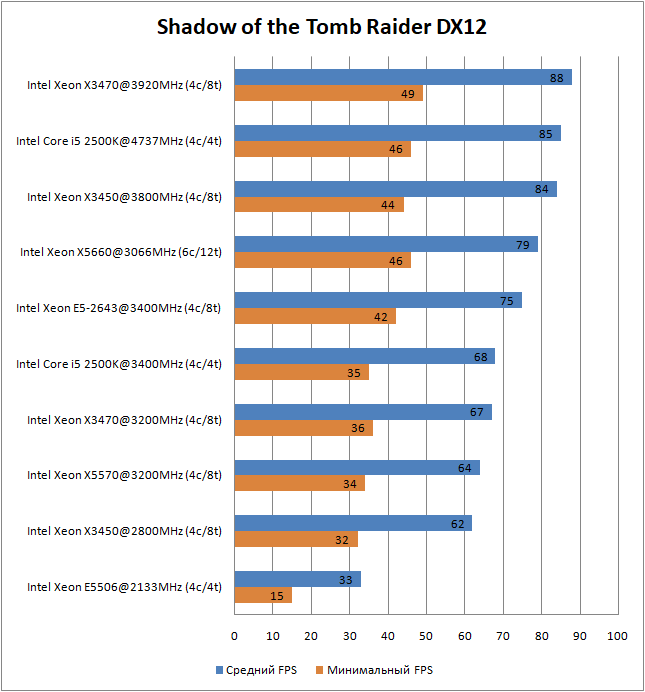
Shadow of the Tomb Raider is perfectly optimized for multi-threaded processors, and in it, the Xeon E5-2643 dropped one more line down, behind the 6-core X5660. However, it should be noted that its performance is 17% higher than that of the nearest stock opponent, the Xeon X3470, which has the same number of cores/threads.
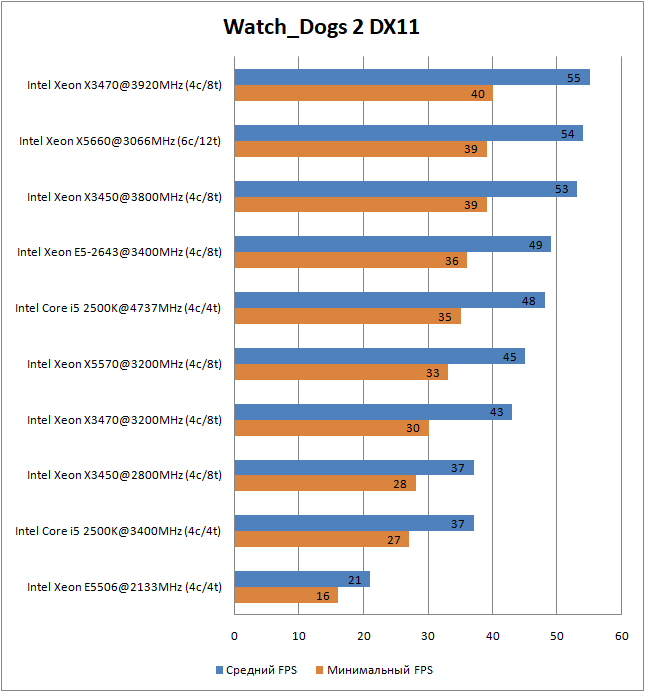
Traditionally, the last game in our testing is Watch_Dogs 2. It is just as well parallelized for a large number of threads as Tomb Raider, but it compares favorably with the latter in that it utilizes the available power much more efficiently.
Here the Xeon E5-2643 again overtook its 8-thread ancestors operating at the stock frequencies, but at the same time lagged far behind the 6-core Xeon X5660, and it, in turn, slightly outrun the overclocked X3450.
In the video below, you can visually evaluate the performance of the Xeon E5-2643 in gaming applications:
Conclusions
In the end, the Xeon E5-2643 turned out to be a rather mediocre chip. But what is most interesting, according to the results of testing, it was still possible to find out the reasons for its low popularity:
Not particularly outstanding gaming performance compared to the cheaper 6-core Xeon X5660 and the even cheaper, overclocked Xeon 3450 and X3470 chips. And this is not remembering the existence of more interesting and advantageous from the point of view of price/performance ratio of processors Xeon E5-2667, E5-2670, and E5-2689.
With some reservations, the same conclusion can be applied to the Core i7-2600 along with the Xeon E5-1620. After all, the era of 8-thread processors is gradually coming to the end. And in confirmation of this will be the last material of the November session, which we will publish in the near future.
Stay up to date with the latest project news and subscribe to our YouTube channels UmTaleLab_Daily and UmTaleLab.
